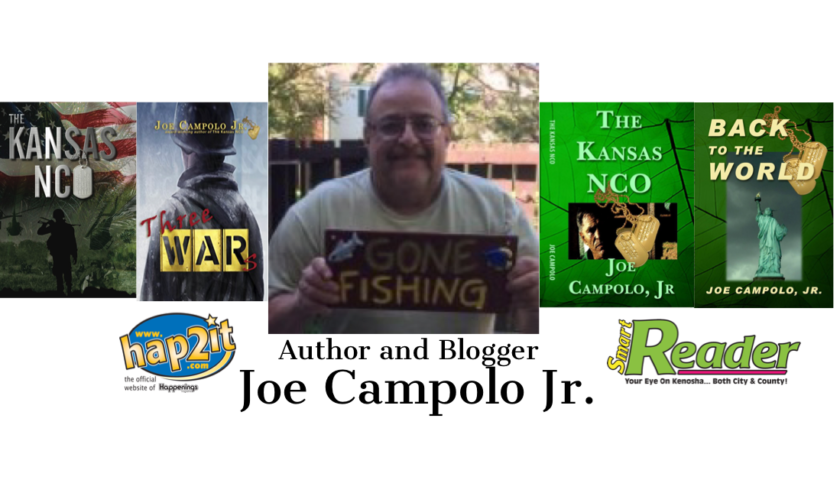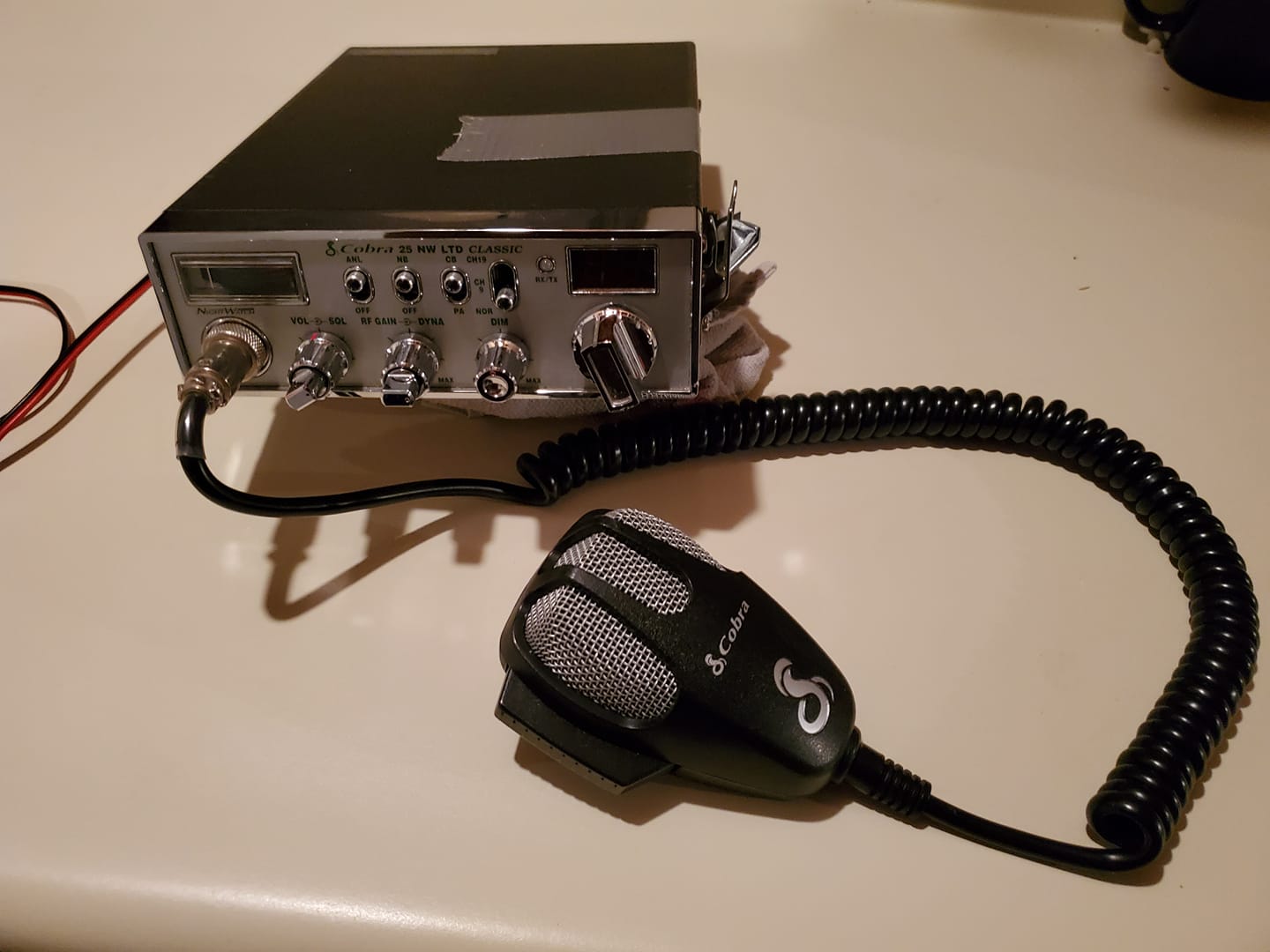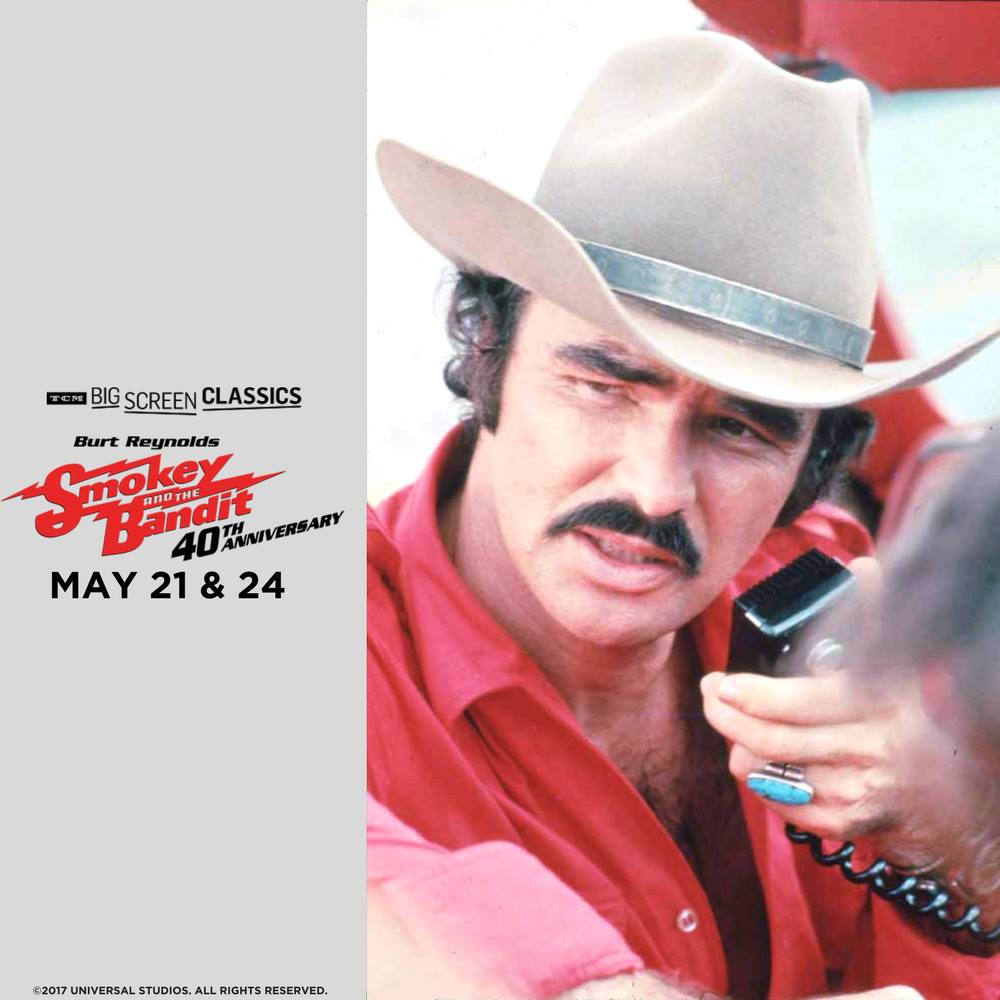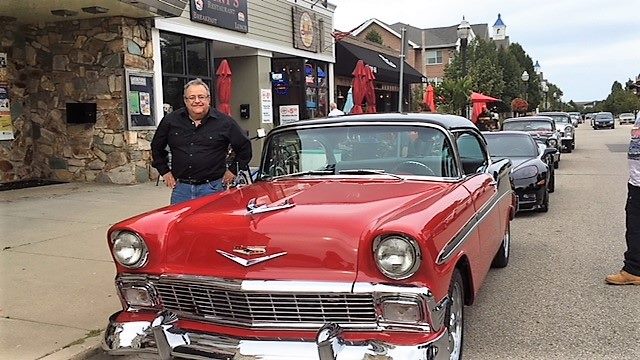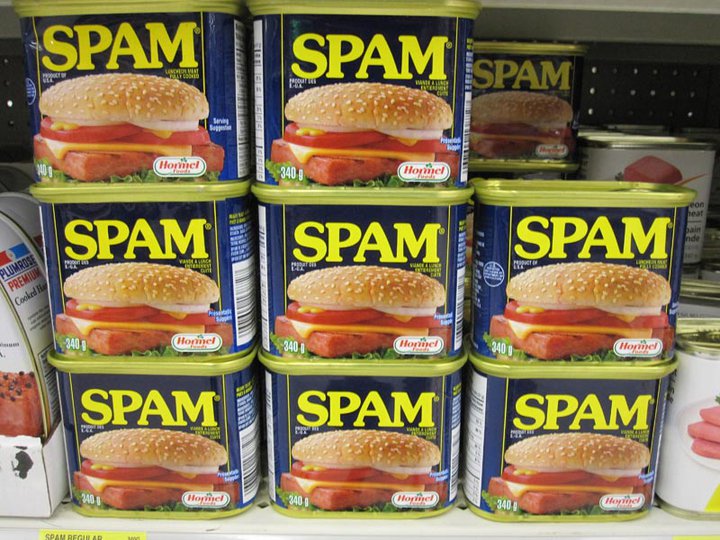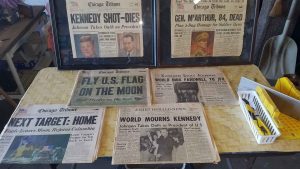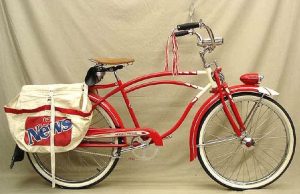Joe Campolo Jr is an author, poet and public speaker. A United States Air Force Vietnam War veteran, Joe belongs to the VFW, The American Legion, and the Kenosha Area Vietnam Vets (KAVV).
Zoom!
With covid and all, most of us have been included in manyZoom meetings by now. I have, and really appreciate the benefit of being able to attend a meeting in my underwear, while sipping beer from my coffee mug.
Being deaf as a rock, I struggle to hear the discussions, but that’s ok, I can still benefit from the “visual contact”. And of course, as always, I daydream during the course of the meeting, especially if the topic is not near and dear to me.
Seeing all the other attendees on my computer screen, my thoughts wander:
*Damn, why would anyone paint their walls that color?
*Is that his wife’s picture, or his mother? Yikes!
*I bet she’s drinking straight Bourbon out of that cup.
*Look at that dinky trout, I wouldn’t have the guts to put that on my wall.
*What an outfit, he must think he’s at Walmart.
*What the hell does she keep looking at, I bet she texts through the whole meeting again.
So yeah, I’m a dedicated Zoomie, and get a real boost from my participation. And no doubt, all the other Zoomies love seeingme as well. 😊
Joe Campolo Jr.
Author, poet, public speaker and a United States Air Force Vietnam War veteran.
Joe may be contacted at: joecampolojr@yahoo.com
See more at namwarstory.com

—————————
“Bunch”
Many years ago, early in my career, I started working in a factory in Northern Illinois. It was a medium size company, and came with a full cast of characters, who occupied many of the positions there. I eventually worked my way into quality control, and later, after finishing my education through the GI Bill, I was able to move up into engineering.
While still in quality control, I had a couple of mentors who taught me the tricks of the trade. They were good guys who knew their stuff, and came with colorful backgrounds as well. “Bunch”, as he was called, was responsible for inspection layout in the machining departments, as well as incoming receiving. His job took him all over the shop floor during the course of each working day. This allowed Bunch to carry out his other “occupation”; that of shop bookie.
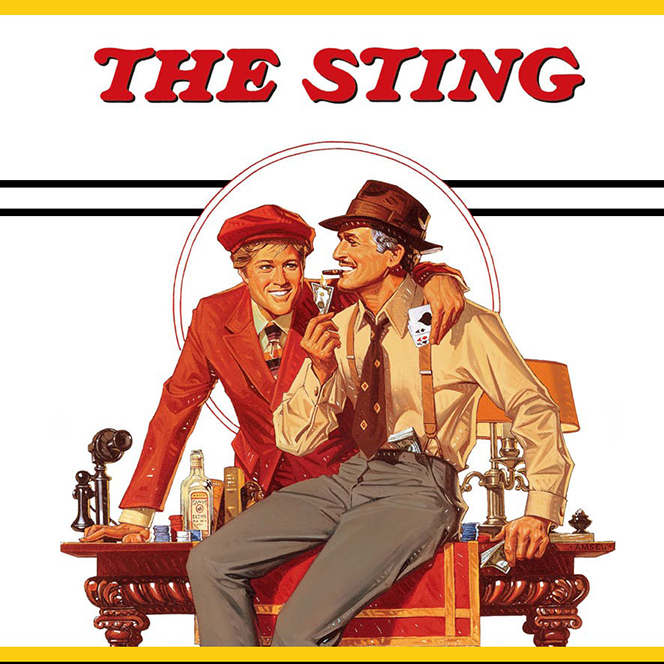
Discreet and accessible, Bunch made book and provided up to date information on the horse races at nearby Arlington Race Track, and several other locations. He provided bookie services on other sports activities as well, when asked, but the ponies were his real area of expertise, and his first love.
It was not uncommon to find Bunch, with several other workers holed up in a corner somewhere, going over the days betting sheets. Bunch collected the bets, recorded them, turned them in, and paid them off when applicable. He was a very popular guy amongst the gambling crowd; honest, dependable and discreet. He never welched a bet or revealed any information about those using his services. He made a modest percentage of the take, and just a small bit to cover his efforts.
Bunch was already an older man by the time I started working with him and he shared his knowledge freely with me and anyone who asked. In addition to his skills in the machining of metals, and knowledgeable racetrack acumen, Bunch also had a colorful assortment of stories, from his days as a grifter during the depression era. Considering his background, it’s not surprising that his favorite movie was “The Sting”. Having made his bones on back–alley cons during those hard scrabble days, Bunch could readily relate to that film.

Bunch was a short, wiry Irishman, who had given up drinking after years of hard habit. And though in his early sixties, and not much more than one hundred and thirty pounds dripping wet, Bunch possessed surprising strength. Some of the iron castings he handled were well over one hundred pounds, but through years of experience and practice, Bunch moved them around with ease. Though much younger, and seemingly stronger, it took me several months to acquire the ability to muscle those large castings around like he did.
Bunch retired about five years after I started working with him. His pleasant personality and acumen were missed around the shop, and of course, the bookie operation was thrown into disarray. Although Bunch had trained an adequate replacement for that enterprise, the fellow handling it did not have the ability to move around the whole factory, as Bunch did. This meant the individual betters had to find a way to get their bets to, and collect from the new guy. It was never the same.
Bunch would still come in to see us now and then, and usually made it to all the company picnics during his retirement. Though long gone to heavenly pastures, I’m sure Bunch is handing out betting sheets and making book on the very best steeds in some upper level stable.
And who knows, he just may be relieving some unwitting spirits of their valuables. 😊
Joe Campolo Jr.
Author, poet, public speaker and a United States Air Force Vietnam War veteran.
Joe may be contacted at: joecampolojr@yahoo.com
See more at namwarstory.com
_______________________
I’m a Morning Person
I have always been a morning person. I had a lot of reinforcement for being a morning person from my days as a kid, working a morning paper route. Some mornings, particularly cold winter mornings, I hated getting out of bed, but most mornings I didn’t mind.
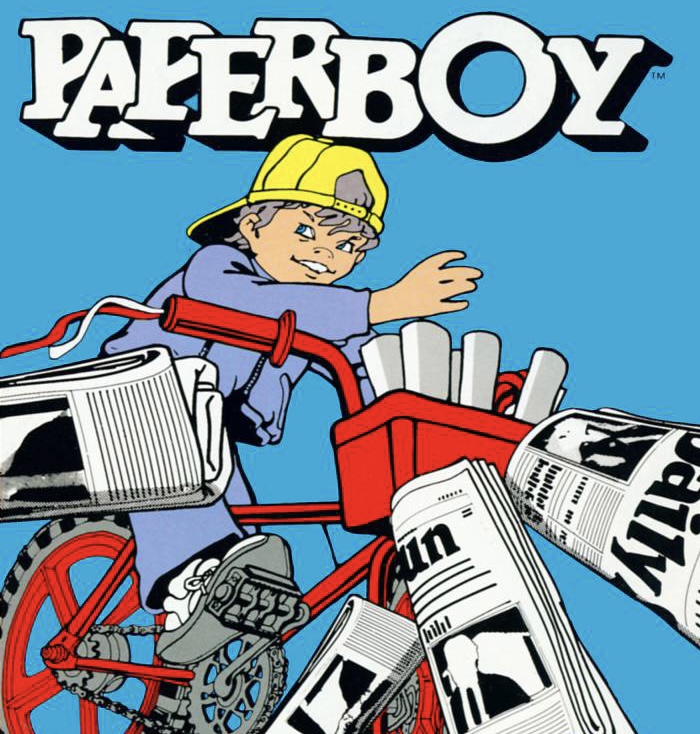 While serving in the U.S. Air Force, I soon learned that everyone in the military was a morning person. In basic training, the Training Instructors (TI’s) would use a “military alarm clock” to wake us in the morning. A military alarm clock consists of a broom handle and an empty metal garbage can. The TI’s walk into the barracks and start beating on the inside of the garbage can to beat the band! Boy oh boy, did we hate that! I was very glad when, after eight weeks, basic training was complete.
While serving in the U.S. Air Force, I soon learned that everyone in the military was a morning person. In basic training, the Training Instructors (TI’s) would use a “military alarm clock” to wake us in the morning. A military alarm clock consists of a broom handle and an empty metal garbage can. The TI’s walk into the barracks and start beating on the inside of the garbage can to beat the band! Boy oh boy, did we hate that! I was very glad when, after eight weeks, basic training was complete.
 Later, while working in a factory out on the plant floor I worked the third shift for a short time. I never got used to that. I would come home in the early morning and try to sleep, but the kids would be out making noise going to school and the birds would be out chirping and the garbage trucks rattling! How the heck could anyone sleep with all that racket going on?
Later, while working in a factory out on the plant floor I worked the third shift for a short time. I never got used to that. I would come home in the early morning and try to sleep, but the kids would be out making noise going to school and the birds would be out chirping and the garbage trucks rattling! How the heck could anyone sleep with all that racket going on?
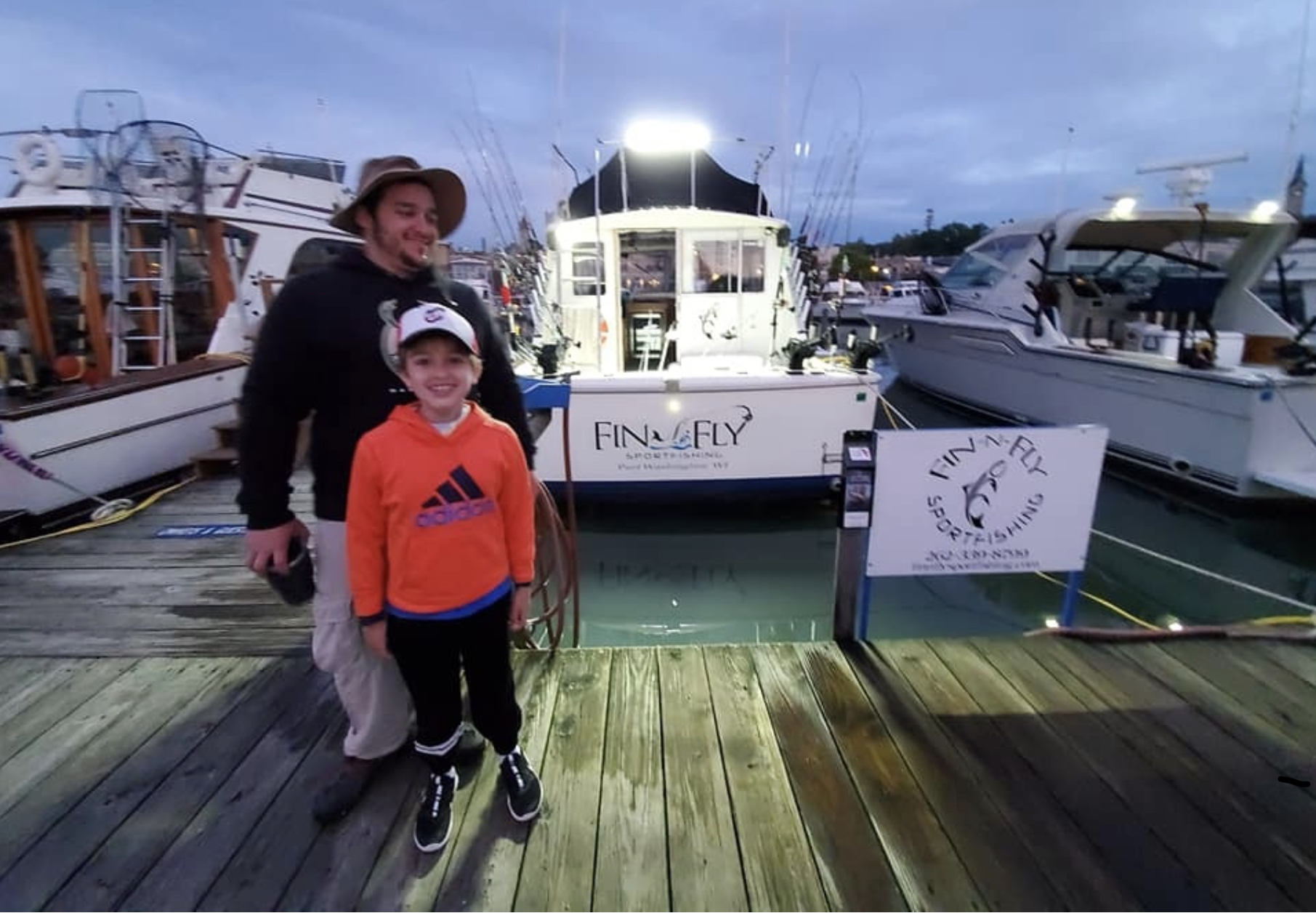 These days I still get up early. I like to read the morning paper and have a cup of coffee when it’s still quiet. And I like to fish, and to be a good fisherman you have to get out there early, because the best fishing is usually in the early morning and late evening. Not that I’m that good of a fisherman, but you do what you gotta do.
These days I still get up early. I like to read the morning paper and have a cup of coffee when it’s still quiet. And I like to fish, and to be a good fisherman you have to get out there early, because the best fishing is usually in the early morning and late evening. Not that I’m that good of a fisherman, but you do what you gotta do.
I also like to take an early morning walk. And again, it’s nice when there are few people around and not too many noisy activities disrupting my tranquil thoughts as I mosey along. But these days, in retirement, I can also take an afternoon snooze when needed…and that makes being a morning person pretty easy.
Joe Campolo Jr.
Author, poet, public speaker and a United States Air Force Vietnam War veteran.
Joe may be contacted at: joecampolojr@yahoo.com
See more at namwarstory.com
*Pictures included: a paper boy, a military alarm clock, and an early morning fishing trip with my son Billy and grandson John
___________________________________
The Old Coal Furnace
Back in the day, our cape cod home on the south side of Kenosha, was heated by a coal furnace. My dad, being rather frugal, was one of the last holdouts in the area to convert to oil or natural gas heating. (When the time came, he went with natural gas)
In addition to providing heat, the old coal furnace was quite an entertainment system. It created some lively debate between my parents, regarding the necessity to convert to a cleaner, hassle–free fuel. It also generated a test of wills between me and my older brother regarding furnace tending chores. And when fully stoked up the furnace creaked, groaned, banged and whiffed as the flames roared and the sheet metal expanded and contracted with the heat. It was a formidable entity.
When the coal truck came, as it did three or four times during the winter, that was an exciting time also. The metal coal bin door to the basement bin would be opened and a metal chute from the truck would be slidthrough it. The coal would be released into the coal bin amidst much banging, roaring and rumbling. Coal dust would be everywhere, and when done the silence seemed deafening.
My dad was very much like the father in “A Christmas Story”. He could change a flat tire quicker than an Indy car team, and he could change an electrical fuse so fast you hardly knew the lights went out. But his real area of mastery was the coal furnace. He could hear a furnace clinker clanking, even with the TV blasting or the radio blaring.
The only way to regulate the heat in the furnace was by adding coal, or adjusting the flues in the tubes which exited the furnace. The temperature in the house was either very warm, or very cool. If anyone messed with the flues, Dad would quiz everyone in the household, like a prosecuting attorney grilling a murder suspect.
The burnt–out clinkers had to be removed once or twice a week. Our driveway at the time was half dirt, so Dad had us fill the tire ruts with the clinkers. He would then drive over them with the car, forcing them into the ground. After years of forcing clinkers into that driveway, you could have probably parked a Sherman tank on it.
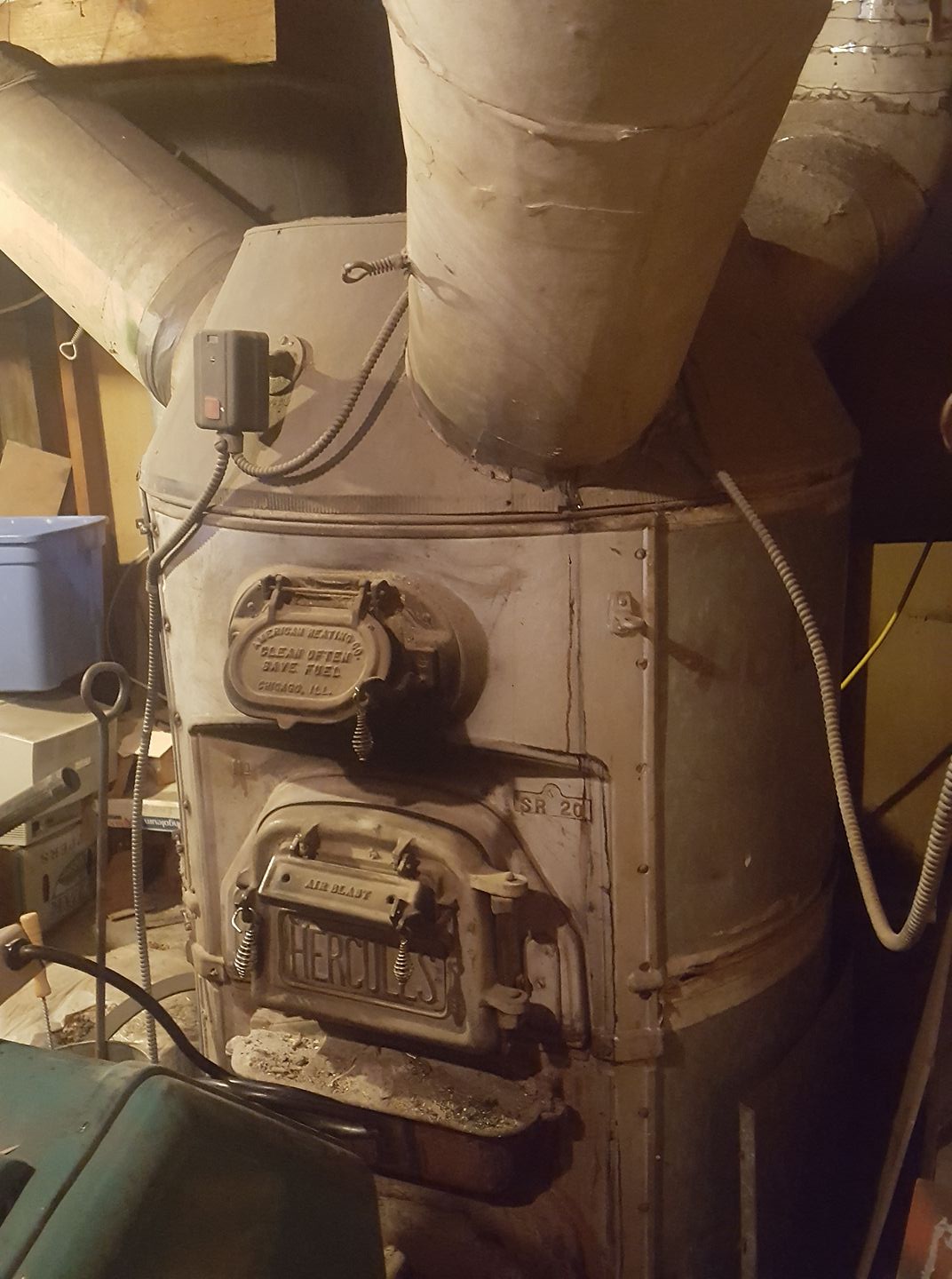
The coal bin was no man’s land for any living thing. Once you entered, you left wearing a layer of coal dust. When we finally converted to natural gas, the nasty coal bin, along with the beastly coal furnace had to be removed. Taking them down and cleaning up after resembled a federal hazmat operation. And for years after, the area still had black coal dust impregnated into the floor, walls and ceiling joists.
I think what finally triggered my dad into converting was the fact that our chimney was the only one in the neighborhood spewing out the telltale black smoke. “Oh, those darn Campolo’s and their coal furnace!”
A pleasant memory from our coal furnace days was Mom putting orange peels on the furnace vents. The high heat dispersed the orange essencethroughout the house. You couldn’t do that with natural gas or oil, because the temperature exiting the vents was lower, and wouldn’t do the job. I miss that nice smell to this day.
My days tending the coal furnace at home, served me well in later life. While serving in the U.S. Air Force at Lowry Air Force Base outside of Denver, Colorado, I was able to put that experience to good use. All of the barracks at the time were built around WWII, and each one was heated by a coal furnace. Two furnace tenders were assigned to each barracks, and since I had experience, I was assigned as one. Being a furnace tender meant I didn’t have to pull KP, or report for early morning physical training. And since I knew my trade well, we stoked up the furnace so as to keep the barracks warm for about five hours. Thatleft us enough time to stroll down Colfax Avenue, hitting all the 3.2 bars along the way, then getting back in time to stoke the furnace beforeevening muster.
Nothing like an old coal furnace to keep you nice and toasty. 😊
Joe Campolo Jr.
Author, poet, public speaker and a United States Air Force Vietnam War veteran.
Joe may be contacted at: joecampolojr@yahoo.com
See more at namwarstory.com
~~~~~~~~~~~~~~~~~~~~~~~~~~~~~~
Those Great Old Bike Trips
When I was a kid, our bicycles were our life lines to the world. From the age of eight, and on into high school we depended on our bikes for both work and recreation.
Many of us had paper routes as kids. My brother and I had bikes equipped with side baskets to carry the papers to our customers. After our paper routes were done, we’d often go fishing or swimming in Lake Michigan or the Lincoln Lagoon. (Fishing only) The side baskets in our bikes would now contain our fishing poles, bait and tackle boxes, and/or our swimming trunks and towels.
My dad worked part time at Tyson’s Sporting Goods Store, repairing bicycles. He also repaired bikes at home for all the neighborhood kids and anyone else who asked. Repairing bikes was more of a hobby for him and he did it mostly free of charge.
Many of us rode our bikes to school, weather permitting. We’d lock them in the bike racks and sometimes tear home on them for lunch. The kind of bike you had would add or subtract to your standing in theschool hierarchy. Those of us with old balloon tire tanks, sucked wind compared to those who had the thin tired speedsters. And if you were a rich kid with one of the new ten speeds, you were golden!
 After a few years my dad cobbled up a couple of thin tire bikes for my brother and I. One speed, coasters, they were much faster (and cooler) than our old balloon tire tanks. We painted them ourselves and added accessories like fancy pedals and better seats. A few of our neighborhood buddies were quite industrious, enhancing their bikes all the time. It was hard to keep up with them, but we tried.
After a few years my dad cobbled up a couple of thin tire bikes for my brother and I. One speed, coasters, they were much faster (and cooler) than our old balloon tire tanks. We painted them ourselves and added accessories like fancy pedals and better seats. A few of our neighborhood buddies were quite industrious, enhancing their bikes all the time. It was hard to keep up with them, but we tried.
Besides swimming and fishing nearby, we also took many long bike trips, usually during the hot summer days. Carol Beach was one of our favorite spots and we’d ride all the way down to where Joe Louis had his home when he trained in Kenosha, back in the day. We’d spend a couple hours swimming the beaches along there and then head home.
Sometimes we’d ride our bikes all the way out to Paddock Lake in Kenosha County. Highway 50 wasn’t nearly so busy back then and it wasn’t a bad ride. Whenever we’d take these long rides to swimming spots, we’d be completely air dried before we got back.
One kid in our neighborhood had relatives on Lake Shangri-la, in Kenosha County. We’d ride out there, taking highway C, almost all the way. It took quite awhile to get there and had a couple of killer hills along the way, but was always a good time. The kid whose relatives we went to see had a “stiff hub” set-up on his bike. That meant the hub and pedals turned constantly, with no opportunity to coast. The bikes that had them were fast, but it was a bear pedaling them non-stop for those long distances. When going down steep hills he had to take his feet off the pedals as they spun so fast.
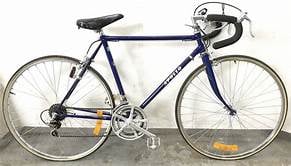 Our other destinations included Simmons Beach, Pikes Creek, Petrified Springs, and the Teapot Woods. If there were no places to lock our bikes, we had to keep an eye on them, and sometimes they would still get swiped. When that happened, we would all go looking for the culprits and try to get the bike back as quick as we could. Usually, the bikes were stolen by other local kids, and after a few days we’d find the stolen bike abandon somewhere. Sometimes we’d find them damaged and would have to do some repairs, other times we’d find them with wheels or other parts missing.
Our other destinations included Simmons Beach, Pikes Creek, Petrified Springs, and the Teapot Woods. If there were no places to lock our bikes, we had to keep an eye on them, and sometimes they would still get swiped. When that happened, we would all go looking for the culprits and try to get the bike back as quick as we could. Usually, the bikes were stolen by other local kids, and after a few days we’d find the stolen bike abandon somewhere. Sometimes we’d find them damaged and would have to do some repairs, other times we’d find them with wheels or other parts missing.
Riding to school one day, I managed to get hit by a car. I banged up my knee a little and totaled my bike. Taking full advantage of the opportunity for sympathy benefits, I got Dad to build me a newer, better bike in just a few weeks.
Despite a few accidents, thefts and other mishaps we had a great time riding our bikes, all over Kenosha and Kenosha County. I still ride today, although with a “Grandpa” style bike…and the rides are pretty short. 😊
Joe Campolo Jr.
Author, poet, public speaker and a United States Air Force Vietnam War veteran.
Joe may be contacted at: joecampolojr@yahoo.com
See more at namwarstory.com
______________________________________________
Our Secret Mountain Retreat
In 1968 after completing basic training in Amarillo, Texas the US Air Force sent me to Lowry Air Force Base just outside of Denver, Colorado for technical training. From Lowry, I would go on to spend one year at Grand Forks, Air Force Base in North Dakota, (cold, boring) then thirteen months in Vietnam, (hot, hazardous) with the remaining eighteen months of my four–year commitment spent at March Air Force Base in Southern California. (Hot… but enjoyable 😊)
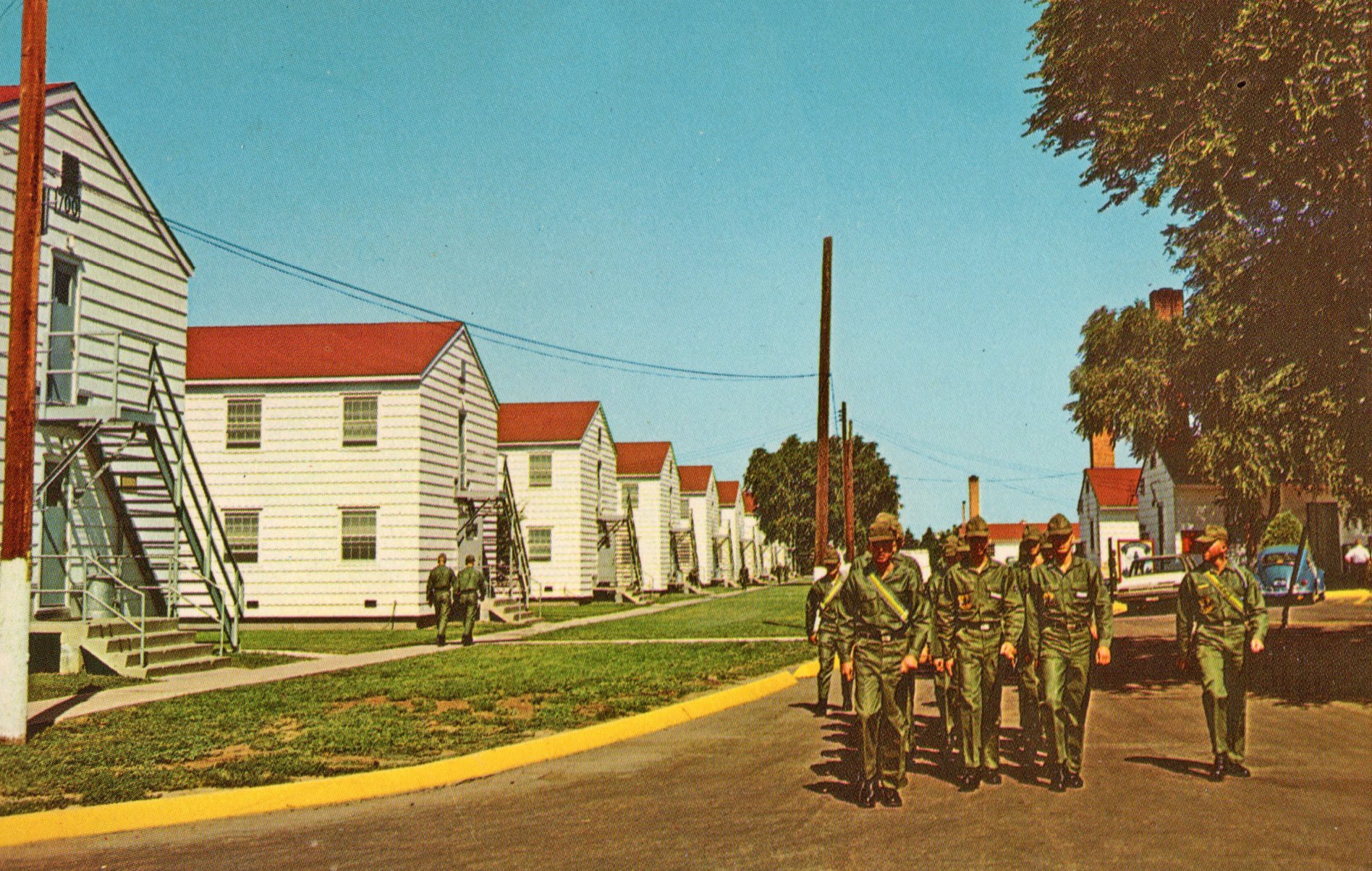
Being 1968 at the height of the Vietnam War, all branches of the U.S. military were ramping up. After my arrival at Lowry, I was put into a P.A.T.S. squadron. (People awaiting Tech School) There were not enough instructors, classrooms or hours in the day to process all the troops going through, so while in PATS, we spent our time cleaning latrines, performing KP, policing up the grounds and any other detail that could be dreamt up to keep us busy day to day. Some of the men waited over two months to get into the regular training schedule. I waited about threeweeks.
One detail, which I was fortunate enough to fall into, was called “Ammo Guard”. It actually involved a three day stay at one of the remote, but shuttered missile silos in the area. Though designated as obsolete and replaced by newer and more lethal weapons systems, old missile silos were kept intact and under guard, however, with all of the missiles and personnel removed.
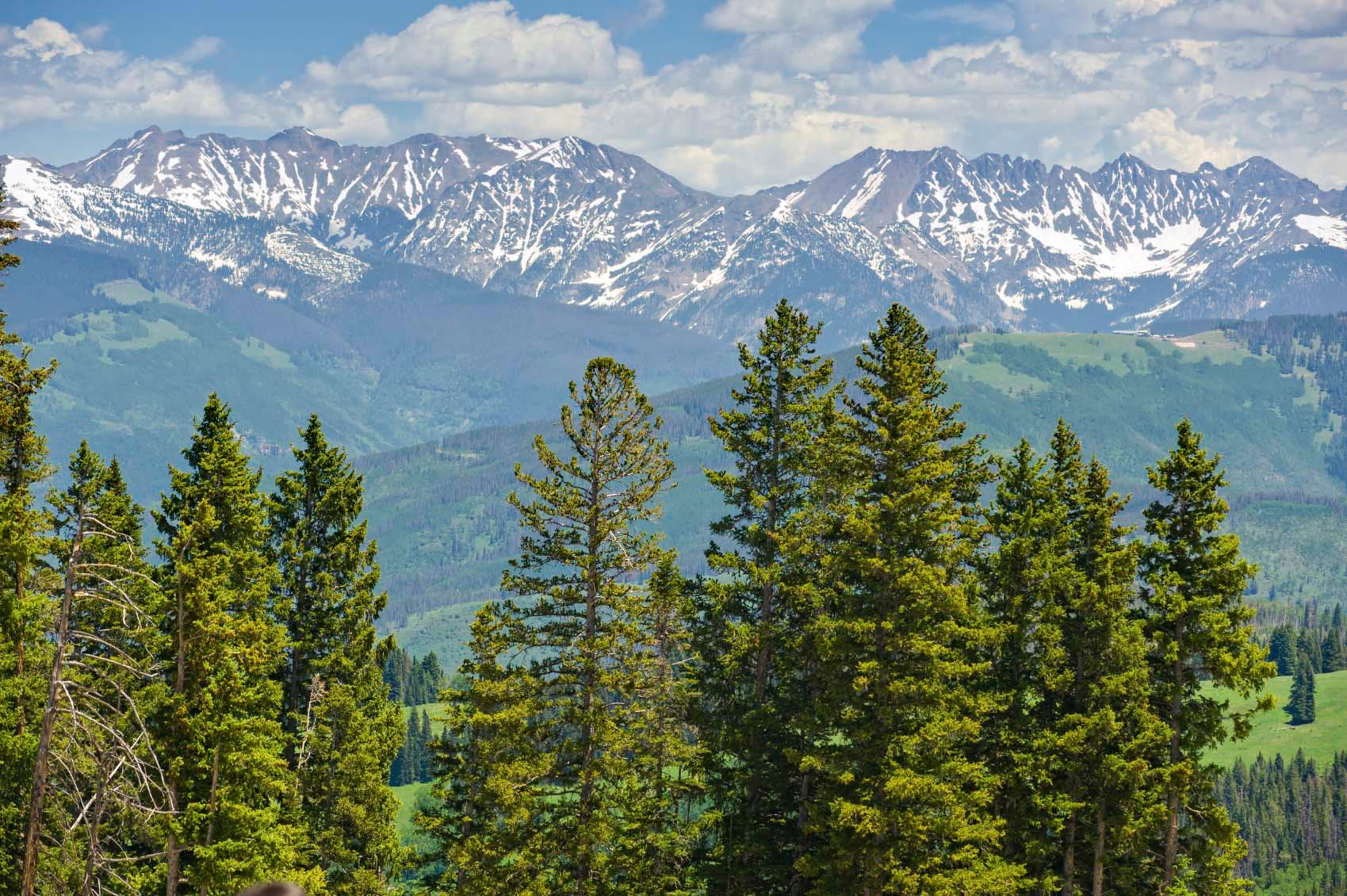
The logic in making them appear active, was to mislead Soviet satellite surveillance. Another reason was to avoid the huge cost and manpower requirement needed to dismantle and remove the operation.
The missile system I was assigned to was about one hour away from Denver, by motor vehicle. Once there we were given a briefing, then a complete tour of the facility, which consisted ofabout six stories underground. From the outside, it was hard to tell that anything of significance existed there.
The innards of the facility, though empty and stark, were quite impressive, with elevators going to the various levels. The complex consisted of several conference rooms, control rooms, living quarters, and of course the huge foreboding silos themselves, which once housed multi-megaton nuclear devices. Surprisingly, only one Air Policeman was assigned to the unit, and he worked a three–day shift; most often being the only living thing in the facility.
There were six of us on the detail and after the Air Policeman’sbriefing and tour we were issued M-16 rifles and sent back outside for target practice. After target practice, we were given free reign to do whatever we liked, so we split up into two groups and went hunting. Surprisingly, the Security policeman on duty locked the gate and went hunting with us. The first day we didn’t find any game, but it was exhilarating tromping around in the high mountain forest and we slept like logs than night. (The Security Policeman had a stash of beer which he shared)
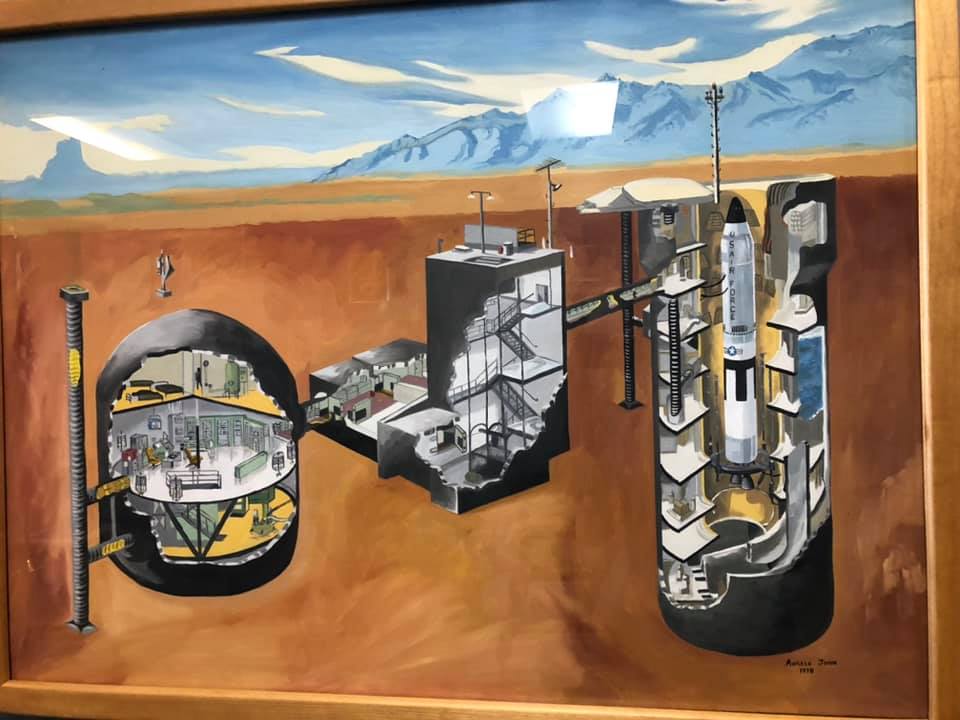
The next morning, we resumed our hunt and the Security policeman, knowing the area and game much better than the rest of us got a nice doe after about two hours. All of us were fired up as we brought the doe into the facility where we dressed and butchered it. We ate fresh venison for the remainder of the three days we were there. After those three days, it was hard to get back to the drudgery of the Airbase, and we missed our mountain retreat.
I was able to pull one more three-day detail at the missile silo, before I went on to my technical training. The second time I was there, a bitter cold spell set in, and tromping around in the mountains with our relatively light field jackets and boots was challenging. High winds kept the game spooked, so we spent most of that detail inside the complex playing cards. But it was still a very good time for those of us assigned to the duty, and I remember it fondly to this day.
——————————————————————————————————————————
Who’s Naming These Birds?
My last article, “The Pigeon Guru” got quite a response, so I thought I’d put together another article on our feathered friends while I’m on a roll. This next article will deal with an issue that’s been vexing me for quite some time; that is just who is in charge of naming these dang birds?
We’ve had a three-season vacation trailer in Central Wisconsin for many years. The area we currently have the trailer in is immersed in nature. And there are any number of wild critters we see during our time up there.
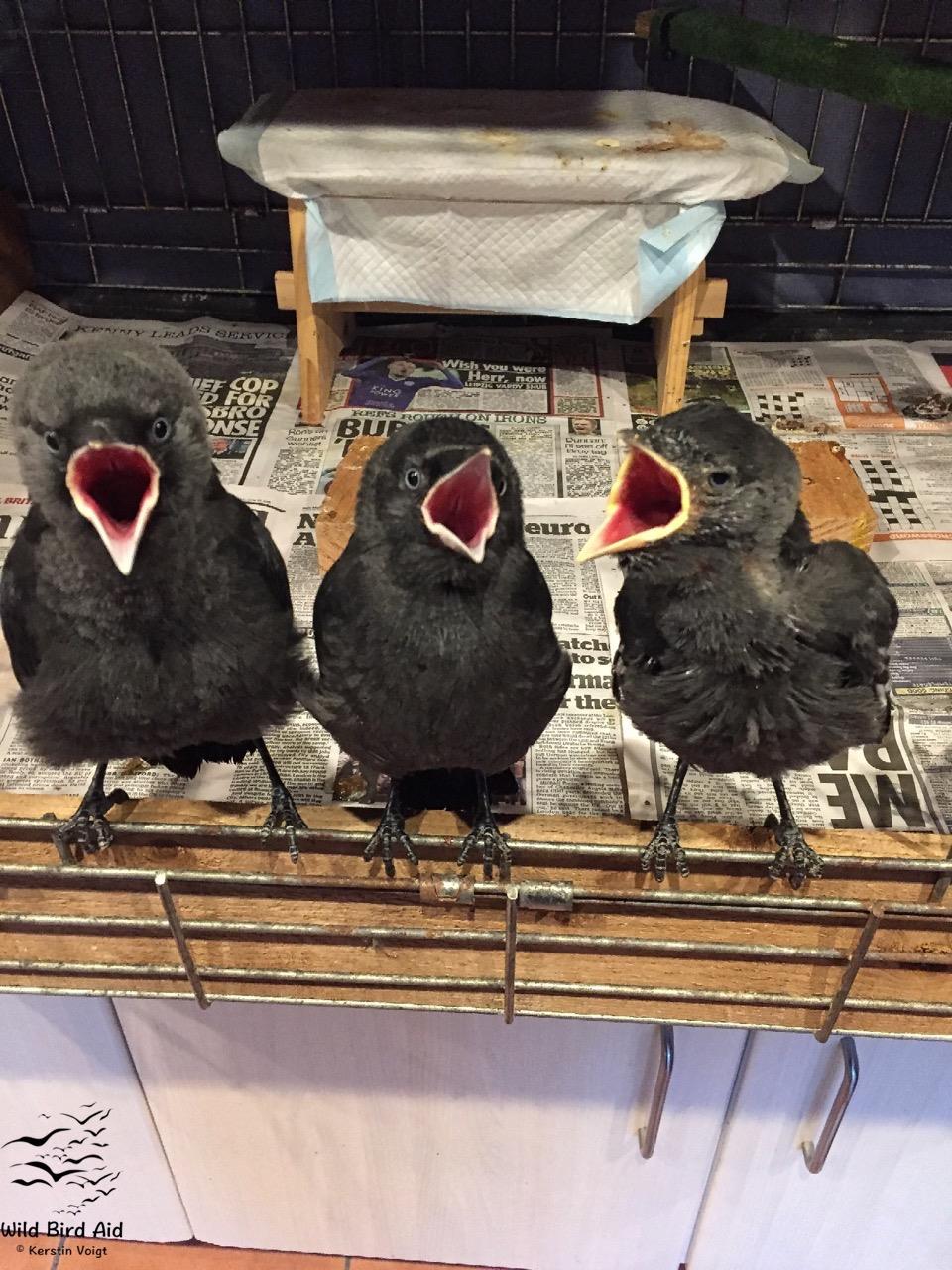
One of the things I enjoy the most, is watching the many different species of birds we see during our spring, summer and fall. Many species of woodpeckers, song birds, water fowl and birds of prey occupy the area we inhabit, along with turkeys, cranes and other types of birds. I have a couple of books on bird identification, and of course, an app for my phone which identifies our feathered friends. And I use both frequently to ID birds I am unfamiliar with or unsure of.
And this is where my problem comes in. Now I’m not familiar with protocol when it comes to naming our feathered friends, but I’m quite sure no birds were ever consulted about the process. Consider the “Grossbeak” for example. A beautiful bird that we see quite often in the spring and early summer, the Grossbeak does have a rather prominent beak…but I see no reason to exaggerate or insult it.
The “Jackdaw” is another name I would not care to be referred to as. There are several different types of Jackdaws and they’re probably in hiding so nobody shouts their name out somewhere. “Hey, there’s a Jackdaw”! And, believe it or not, some sick ornithologist slapped the label “Anis” on one poor bird, found mostly in southern Texas and Mexico. “Grassquits” is another moniker applied to a bird from the Caribbean area. Grassquits…what the heck does that even mean? “Hey, there’s a Grassquits”. “Uh, uh…. a what??” And the “Bananaquit” is another Caribbean bird, no doubt related to the Grassquits. When, exactly, do these birds quit, before they eat the product, or when they are full?
Now I wouldn’t wish to be named a “Swamphen”, nor a “Moorhen” either. And please don’t apply “Limpkin” to my description. And if you’re going to call me a “Boobie”, we might just not get along! “Tattlers” and “Yellowlegs” are some other names I wouldn’t particularly care for either.
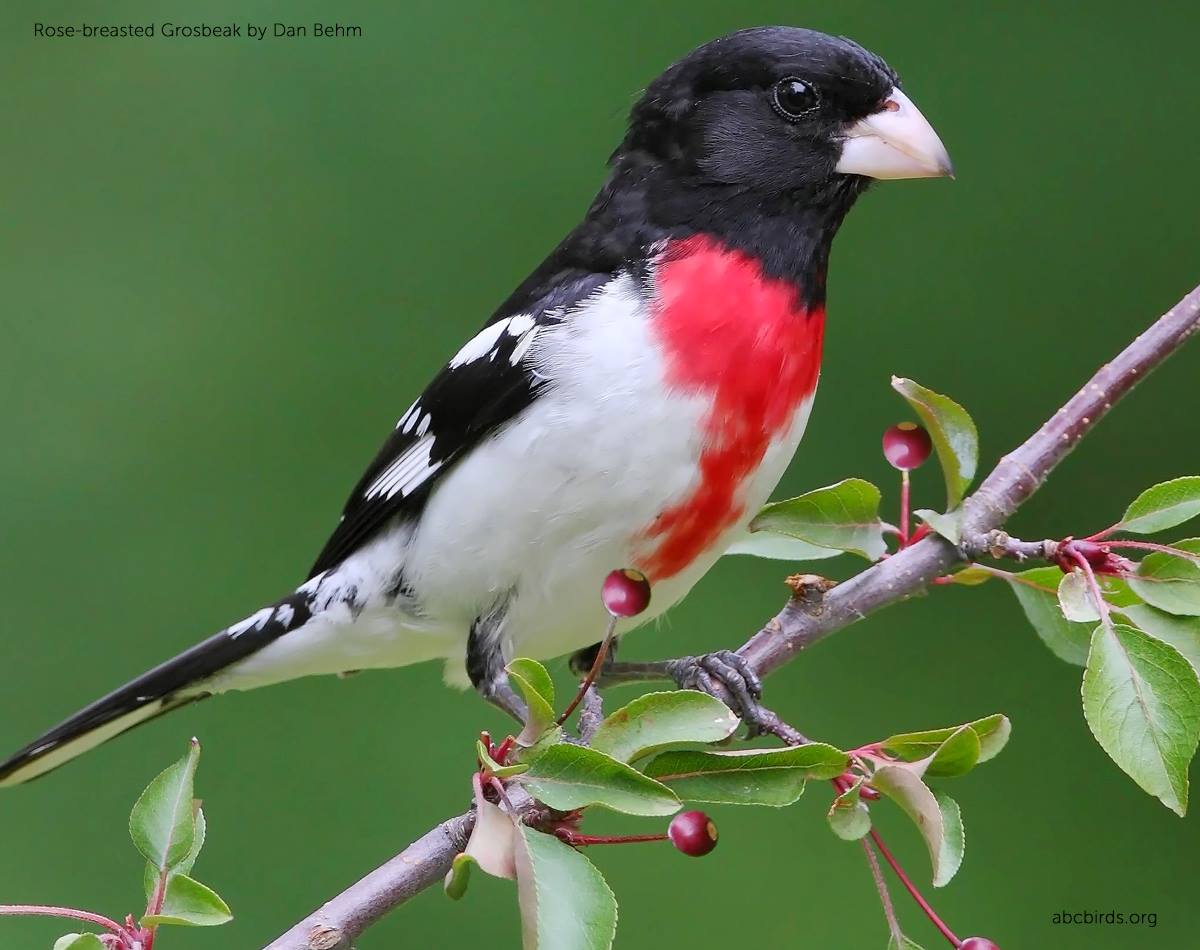
If you see a “Common Chiffchaff” please don’t make fun of their name as they might be sensitive. There are several types of “Towhees”. Not exactly sure what a “hee” is and how a bird would tow it. (Or why) There are many types of “Flycatchers”, and no doubt they dine on flying insects. If birds were to name humans, maybe they’d call us “Hamburger Catchers”, or “Sauerkraut Catchers” perhaps. They could use the opportunity to turn the tables on us.
Some names applied to birds aren’t offensive at all, in fact some are quite flattering. “Kingbird” wouldn’t be a bad thing to be called. And if you’re a flycatcher I guess “Great Crested Flycatcher” wouldn’t be too bad either. Many birds have the term “lesser” as a first name. “Lesser Gold Finch” for example. Personally, I’d prefer to be the “Morer Goldfinch”, but I don’t believe they’ve named one just yet.
So going forward, I hope our ornithologists are more sensitive regarding the names they apply to our feathered friends.
And whatever you do, don’t call me “Dickcissel”!
Joe may be contacted at: joecampolojr@yahoo.com
See more at namwarstory.com
_____________________________________________
The Pigeon Guru
One of the fads in our old neighborhood back in the day, was raising pigeons. At least seven kids on our block raised homing pigeons, some for several years.
I got into the craze early, purchasing a small pigeon coop and two Tumbler pigeons. Tumblers were pigeons that would fly up into the sky, then tumble end over end towards the ground. They would repeat this performance non-stop until they tired and returned to the coop. There are many varieties of Tumbler pigeons, and they all exhibit the strange tumbling behavior. I always figured it was some sort of mating ritual. (But I never tried it myself)

After two weeks of homing, (holding them in their coop to imprint them) my Tumblers were released from their coop. And they did come back, much to my relief. After that, they were let out every day to fly as long as they wanted. The coop was attached to the inside of our garage, by a window for coming and going. At the time, I attended Sunnyside (now Grewenow) School and my classroom was on the 2nd floor, facing the block we lived on. I would race home at lunch time and release the Tumblers; when I returned to class after lunch all the kids in class, and sometimes even the teacher would watch the magical birds that would fall out of the sky and soar back up. It was cool!
After my brother got involved, our dad built a large pigeon coop, replacing the smaller one I had. We then enlarged our flock, to include several different types of pigeons; Blue Bars, White Doves, and Fantail pigeons.
The other kids in the neighborhood had large coops built as well, and there was a real competition going. Kids being kids, sometimes we played dirty tricks on each other’s pigeon coops. But for the most part we all cooperated and shared information about the birds, trading them on occasion and helping each other out.
Back in those days Kenosha had a “pigeon guru” by the name of Werwie. Werwie lived on the north side of Kenosha and raised and sold pigeons, along with pigeon feed and other related products. He also dispensed information to rookies and novices alike. Any serious discussion in Kenosha regarding pigeons, referenced Werwie at least two or three times during the conversation. Visiting him was like a trip to Mecca for all the pigeon fanciers.
The different types of pigeons in your coop determined your rank in the local “pigeon hierarchy”. Blue Bars were the most common type of pigeon. They are the ones you typically see fouling up statues around parks, nesting under railroad bridges and begging for food everywhere. They are commonly known as “Rock Doves”. The Tumblers I had were rare, and so for a time, my rank in the local pigeon hierarchy was elevated.
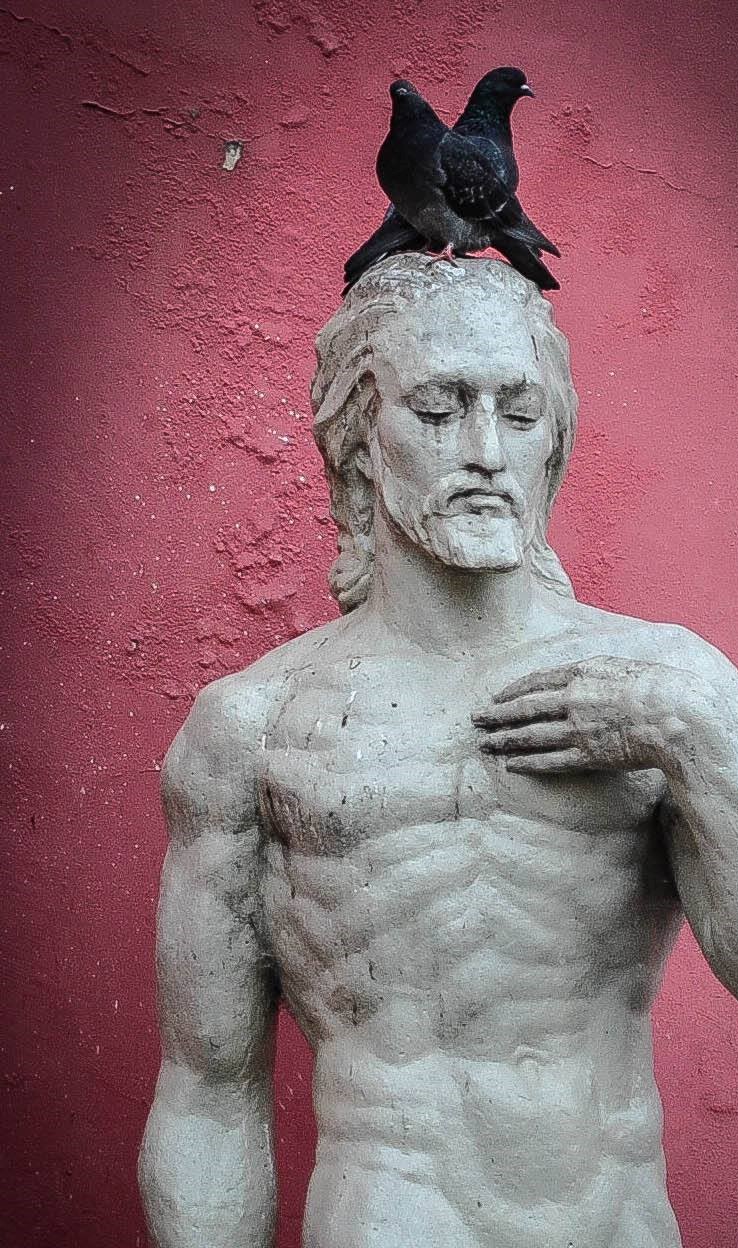
Fantail pigeons were kind of a “fancy Dan” bird, not very active but showy. My brother and I had some for a time, but soon tired of their dull behavior. Dragoon pigeons were odd looking and not very common or sought after. King pigeons were large and chicken like in their habits. One kid in our neighborhood kept them, and his family added them to the menu. Tasty and large, they also made a large mess! Some of the pigeons we had over time, remained unknown regarding their proper identity.
Racing pigeons was very exciting. Pigeons would be banded and taken to a far-off location. The ones that returned the fastest were the winners. Waiting for them to return was an anxious time, sometimes they were preyed upon by hawks, and other times killed by storms.
As kids, our finances were usually stretched to the limit. Nobody in our blue class neighborhood received much of an allowance, if any at all. We mostly made money through paper routes, cutting grass and shoveling snow. Pigeons were not cheap, so we usually traded them for other pigeons or relied on natural reproduction to increase our flock. (Pigeons are very prolific)
There were times, however, when we ran out of feed and had to improvise. Desperate, we occasionally raided nearby corn fields, earning the wrath of the farmer, and our fathers when caught.
Despite our various mishaps and shenanigans, we enjoyed our pigeon raising adventures very much. And I can still see those Tumblers, soaring high into the sky, then tumbling back, over and over, stopping just short of the ground.
Joe may be contacted at: joecampolojr@yahoo.com
See more at namwarstory.com
_________________________
RHIP
Anyone who served in the military is familiar with the abbreviation “RHIP”. It stands for “rank has it’s privileges”, meaning that those of higher rank, get more bling, while those of lesser rank get the fuzzy end of the lollipop.
And, of course, it’s not just the military that embraces that policy; police forces, fire departments, and yes, business’s, schools and industry all have policies that favor those of higher status, seniority, or position. And that’s how it should be, after all…we aren’t communists are we. 😊
But sometimes funny things happen when RHIP runs amok, shall we say. Or, when RHIP takes a strange turn.

One story, told and re-told in one variation or another in almost every military installation I ever served in, related to a supposed incident in which an enlisted man failed to salute a young lieutenant. The enlisted man was carrying a load of groceries out of the commissary and thus, could not salute.
As the story goes, the lieutenant took the enlisted man to task for not saluting, and made him salute the lieutenant twenty times as punishment, embarrassing him in front of his wife and children who were with him. A passing Major who witnessed the incident, then scolded the lieutenant, and made him return the salute twenty times. Sweet revenge!
Urban legend? Perhaps, but it’s great coffee break faire in the ranks of the enlisted corps, all over the armed forces. Everyone likes to see a snarky junior officer get his comeuppance.
One story of upper echelon humor in Vietnam always gave me a good laugh. Now all humor is based on a bit of fact, and there’s enough believable information in this one to be true, which is what really makes it funny.
In the Vietnamese Air Force, many Vietnamese pilots were great aviators, and some were fearless in battle, but many of them had the habit of strolling around with their helmets on, even while off duty. Most American pilots removed their helmets as soon as they got out of the cockpit, but the Vietnamese pilots would walk all over the damn place, with their helmets firmly attached to their heads. I witnessed this myself on several airbases over there and found it quite comical. They looked like small aliens, walking around in their space suits.

Now according to those in the know, a top Vietnamese officernamed General Trang, was at Ton San Nhut airbase in Saigon, waiting to be flown to another base via helicopter. The pilot and the “peter pilot” (chopper co-pilot) sat waiting for the general in the chopper. Because the Vietnamese are small and slight of build, and they wear their helmets all the time, the two pilots waiting in the chopper didn’t realize that the general was already on board, sitting in the rear seat. They thought it was just a flight suit and helmet, placed upon the seat in the fashion that extra flight suits and helmets were typically stowed.
As the pilot spoke to his co-pilot, the dirty deed went down.
“I wonder where that goofy SOB Trang is. And that little toady aid of his is late to. They better get their butts in here damn quick, we’re supposed to depart in ten minutes.”
General Trang, who was sitting in the backseat all along, but was mistook as an empty flight suit, understood English perfectly well. He immediately got up and left the helicopter, much to the surprise of the pilot and co-pilot.
Within two days both men were transferred to helicopter dust-off duty, picking up the dead and wounded from combat zones,in the deadly Central Highlands of South Vietnam.
Don’t mess with a General!
Joe may be contacted at: joecampolojr@yahoo.com
See more at namwarstory.com
———————
Those Darn Hippies!
Most folks who were around during the sixties and seventies remember that colorful cast of characters known as “hippies”. Peace, love, grass, kumbaya, and all that other good stuff flowed through their ranks, like you know what through a goose.
Personally, I had no issues with the counter-culture, I thought for the most part they were harmless, and actually pretty humorous most of the time. During my time in the U.S. Air Force from 1968 to 1972, I did bump up against a few of their shenanigans, however. While stationed at Grand Forks Air Force base in North Dakota, a group of them snuck on the large SAC (Strategic Air Command) base and spray-painted graffiti on a couple of B-52 bombers parked on the runways. That caused a major junk storm!
Before departing for duty in Vietnam, I was stationed near San Francisco, getting additional weaponry training. Off duty one day, a group of us ventured downtown where a folk festival of some sort was going on. A bunch of the hippies tried to talk us into going AWOL, instead of going to Vietnam. A few members of our group took them up on it, and that caused another major junk storm!
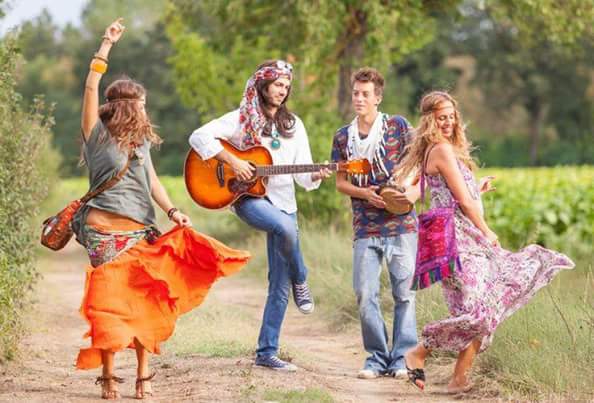
Upon my return from Vietnam, there was a group of hippies protesting us at the airport, but I didn’t hold that against the them, as there were many other “non-hippies” mixed in with the crowd. Later, while stationed at March Air Force Base in Riverside, California hippies would some times come and block the front gate, protesting the war and the military in general. I was put on one of the details, to augment the security police in an effort to contain or curtail their activities. They offered us marijuana and beer, (refused of course) so most of the airmen on duty harbored no ill will against the colorful crowd.
I actually hung out with a few hippies during my off-duty time while I was stationed at March Air Force Base. These hippies, had no interest in recruiting me or encouraging me to leave the military. As a matter of fact, they enjoyed many of the goodies I brought them from the commissary. And one of their favorite activities was going to the end of the runways by the large air base, standing as close to the security fence as possible and waiting for the propeller driven aircraft to take off and land. They called it “Doing the props”.
The reason they did this, was to feel the prop wash, which flowed down when the low flying aircraft went over. It gave them a “rush” they said. I enjoyed watching them, as they would sway and sing and enjoyed themselves immensely, compliments of the same U.S. military which they so hardily protested, most any other time. Hippies were a hoot! 😊
Joe may be contacted at: joecampolojr@yahoo.com
See more at namwarstory.com
(This article first appeared in the 7/15/21 issue of the Smart Reader)
___________________
The Teapot Woods
Most kids who grew up on the southside of Kenosha back in the day were familiar with a wooded area just south of 22nd Avenue,where it curves west to Springbrook Road. (Just past St. Therese church) The area is adjacent to the old Vern Iron farm, on both the east and west side. To this day much of the area is still wooded and in farmland. The area is known as the Teapot Woods because it’s roughly the shape of… well, you guessed it — a teapot.
This area held many attractions for us kids, besides the woods there was a large pond and many wild critters which we chased/and or hunted as we got older. While still young sprouts, we would build forts in the woods and sneak up on each other from our hidden strongholds.
We’d usually ride our bicycles to the Teapot, hiding them in the bushes while we visited the area. For a time, many kids in our neighborhood raised pigeons, and we often raided the adjacent corn fields to obtain feed for our ever-hungry birds. Sometimes we were caught by the shotgun-wielding farmer who shagged us off his property unceremoniously. He even shot over our heads a couple of times to get his point across. We could hear the shot peppering the corn stalks above our heads, after which we’d beat it out of there in a damn hurry!
When we were old enough to hunt with real weapons, (aside from our BB guns) we often went after rabbit, squirrel and pheasants at the Teapot. There were plenty of deer in the area also, but we never hunted any while there, though others did. I got my first pheasant in the Teapot Woods when I was about fourteen years old. A proud moment for me!
The Teapot’s pond was full of bullheads, bluegills and crayfish. The meat from the crayfish tail made great perch bait, but we mostly let all the bullheads go, since few people we knew wanted any. The gills were usually too small to keep. When it was hot, we would take a dip in the Teapot pond. Riding home on our bikes, we air dried.
There were also foxes, muskrats, some beaver, and a few coyotes around the Teapot, and they’re mostly there still today. In fact, there’s actually many more coyotes in the area now than there were back then, but that’s true of all of Kenosha and the surrounding area.
Just north of the woods, across the street from where St Therese’s church now stands, a number of small stores and businesses have come and gone over the years. There was a small grocery store there for many years. Then a couple of restaurants and small businesses of one kind or another. But they all came and went. Now there are apartment buildings on that part of the property and no doubt they will be there for some time. The northeast corner of the Teapot bordered on the Keno Outdoor Theater, which has since been removed. The Keno provided some adventures of its own, but we will save those for another story.
As the area around the Teapot slowly developed, we were always in fear that our happy hunting grounds would be swallowed up by a housing development, but as mentioned earlier, it is still mostly vacant to this day. Maybe one day I’ll ride my bike over there and walk through it, just for old times sake. No doubt it will seem much smaller now than when I was a kid. And maybe I’ll catch a few crayfish while there. If I don’t use ‘em for bait, I can always make some nice Jambalaya.
Joe may be contacted at: joecampolojr@yahoo.com
See more at namwarstory.com
(This article first appeared in the 6/17/21 issue of the Smart Reader)
______________________________________________
Gone Fishing
I like to fish, have been fishing since I was a little kid, fished all over Kenosha, all over Wisconsin, and many other parts of the U.S. as well. I even fished in Vietnam during the war, hillbilly style, using grenades.
And with all that fishing, I’ve had my share of adventures and misadventures. (Reference my blog website). We currently have a trailer in a remote location near the Germania Marsh in Central Wisconsin. Before that we had a mobile home on Lake Puckaway, about fifteen miles south of where we are now.
Puckaway is fed by the Fox River of the North and flows west to east. Between the river and the lake, we caught some very nice fish while there. I often fished with my daughter JoAnn, and other family members and friends. But I most often fished with our next-door neighbor Art. Art liked to fish for catfish, and we caught some big ones over the years. My best was a 14 ½ pound flat head that gave me a real tussle. Art caught a 35-pound carp one time, and it took him about a half an hour to get it in. We were hoping it was another big catfish, as it pretty much took all the starch out of him that day.
One of the adventures Art and I had, was nearly getting trampled by an Amish horse, while fishing near a small dam. That story is on my website blog. Another mishap we had, was when my small row boat left our boat trailer as we were towing it. It fairly sailed in the air for a time, before coming back down to earth.That’s on the blog also.
Sometimes Art and I would fish from shore, or off of one of the piers on the north side of the lake where we lived. We’d usually set out two lines, with a different bait on each. One day, while on the pier, Art and I were catching catfish left and right. I reeled in a pretty nice one, but failed to anchor my other rod securely. So, while I was tending to the cat I had just caught, another cat grabbed my bait on the other rod and before I knew it, the fish pulled the rod into the water. Well, it was long gone and nothing I could do about it.
About two weeks later, my wife Ann and I were swimming next to the same pier. Puckaway is a very shallow lake, and I was walking myself out towards the middle. While doing this, I was thinking to myself, “my damn rod is out here somewhere”. No sooner had that thought entered my mind, when I bumped an object with my foot. I kicked the object up, and sure enough, covered in silt though it was, there was my fishing rod!
The fish that pulled it in was long gone, but everyone got a big kick out of the story. Art spent a long time cleaning the reel up, but it never worked properly again.
This happened to me one other time on Lake Puckaway, only that time I was not so lucky, I never found that rod and reel.
Another adventure Art and I had, was when our outboard motor died, about three miles up into the Fox River. We had caught a couple of catfish, a few walleyes and some sheep head, (which we didn’t keep), but that was the end of our good luck for a while. Fortunately, the current flowed our way, so we eventually drifted out of the river back into the lake. We still had quite a way to go to get to our pier, and since we were on a large pontoon boat, paddling was not an option. I called our friend Ken from my cell phone, and he eventually came out with his pontoon and towed us in.
As we were being towed back, we trolled a couple of lures and picked up another nice walleye and a few more catfish. For his trouble, Ken got the walleyes, we kept the cats.
Joe may be contacted at: joecampolojr@yahoo.com
See more at namwarstory.com
(This article first appeared in the 6/3/21 issue of the Smart Reader)
_________________________________________________
Break 1–9 for a Radio Check!
Recent reports of gas shortages and images of filling station lines reminds me of a time in the seventies, when gas shortages occurred on a regular basis, thanks to OPEC strangleholds. One of the popular devices of the time, helped us locate gas, on occasion. We also had a lot of fun with it.
Long before cell phones came into use, many of us motorists added CBradios to our vehicles. Semi-truck drivers had been using CBs long before us “four wheelers” discovered them. They used them for directions, traffic, weather conditions, and just to chat back and forth.
Spurred on by those gasoline shortages, many motorists welcomed the convenience of getting information over the air while driving. I myself located gas several times during those years, using my CB radio. Without it, many motorists went from filling station to filling station, until they finally located one with available fuel. It was very frustrating at times.
Practicality aside, the actual reason for joining in on all the airwave fun, may have been just to get in on the hot fad at the time. Within a short period of time, everyone and their brother (or sister) had a CB radio in their car. And they would start yacking back and forth as soon as they pulled out of the driveway.
“What’s your 10-20?” (Location)
“How about a 10-36”? (What time is it)
“That’s a 10-4!” (Affirmative)
Using CB lingo was half the fun.
Out on the open road, CBs were often used to keep an eye on the state troopers:
“How bout a bear report”. (Have you seen any state patrols in the area)
“Anyone see any bears in the air?” (Are aircraft checking motoristsspeed).
Sometimes state troopers, who monitored the airwaves, would play along and answer back.
“Negatory, no bears anywhere nearby.”
After which they’d nail someone, who fell into their trap.
The “18 wheelers” (semi-drivers) didn’t have much patience with us 4 wheelers, and chastised us night and day. They objected to our driving habits, the size of our vehicles, our speed and even to particular individuals, when they could identify them inside the vehicles. The truckers kept up a steady jabber twenty-four hours a day, talking about anything and everything. Sports, current events and politics were always hot topics. Occasionally, they’d spot an attractive woman in a vehicle, and chatter back and forth about her. (Cover your ears kids) They would keep track of her vehicle and all the truckers along the route would watch out for her and report on her status.
Sometimes the truckers would get into heated shouting matches with other vehicles; 18 wheelers, 4 wheelers and otherwise. These CBRambos would cuss each other out, threaten each other and occasionally pull over to duke it out. They were quite humorous. Four wheelers would also, on occasion, get into dust ups, with each other, or truckers via the CB radio. Often, while motoring along on our family vacations, I would listen to all the CB chatter; friendly and unfriendly. It was quiteentertaining!
The CB radios were typically 40-channel units. The open channel where most of the chatter went on was 19. If two people tied up the channel, they’d be told, in no uncertain terms, to take it to another channel. If you were traveling with another vehicle, you and the other vehicle might set-up a specific channel, for a more private conversation. Of course, anyone who happened onto that channel, could listen in and/orcomment.
Television shows of the time period, especially cop shows, would often feature CB radio activity in the program, and there were even a couple of movies centered around the fad. (Reference the movie “Convoy”, 1978)
With the heyday of CB radios long passed; we’ve had to find other ways to amuse ourselves on our cross-country trips. Blue tooth phone service is nice, but it doesn’t replace all of the entertainment we received via our old CBs. I miss those days, and still occasionally boot up the old unit, just to see if I can still connect with someone.
“Breaker 1–9, 10-4 good buddy, what’s your handle?”
(Mine was KenoJoe) 😊
Joe may be contacted at: joecampolojr@yahoo.com
See more at namwarstory.com
(This article first appeared in the 5/20/21 issue of the Smart Reader)
___________________
Fishing Lincoln Lagoon, Back in the Day
Growing up in Kenosha in the 50’s and 60’s afforded us many places to catch fish. Of course, our favorite was fishing for perch in Lake Michigan. We often fished the Southport Beach area or the North pier to catch a bucket of those tasty buggers. In the spring we’d catch buckets of smelt at night, using a dip net or a sein net. Those little rascals were pretty tasty also, I could eat about two dozen myself.
Those of us who grew up on the south side, or the south-central side of Kenosha also had a lot of fun fishing at the old Lincoln lagoon. We’d catch bullheads using worms, or carp using our homemade dough balls.
The doughballs were made with flour, salt, warm water and then cured for about twelve hours. You had to use just the right amount of salt and water to get them to cure properly. If not, the doughballs wouldn’t stayon the hook, or they’d break up too easily in water.
The best place to fish in the lagoon was by the “island”. What everyone called the island, was actually a small peninsula that was just off of the northeast end of the bridge. After school, or weekends many of us would be down there jockeying for position on the small piece of real estate. If you didn’t get a spot on the island you had to settle for somewhere on shore, where the fishing wasn’t as good.
We didn’t eat any of the carp we caught out of the lagoon, nor the bullheads either. We mostly fished it for fun, but my dad would have us bury a carp or two in the garden every year for fertilizer. If you didn’t bury it deep enough the local felines would dig it up and raise hell, after which my dad raised hell.
Sometimes people would buy our catch off of us. The price for an average carp was anywhere from fifty cents to two or three dollars. Bullheads, if I remember, were a quarter a piece. I made quite a bit of money selling fish I caught in the lagoon. There was a local tavern owner who, on occasion, would come and buy everyone’s catch. He prepared and served them at his tavern. Whenever we were there, we always hoped he would come around because he paid the highest price for the fish, and he would buy them all.
Some local residents, who weren’t so well, off caught the fish to supplement their food supply. One day my best friend Jim and I were fishing on the island and a young woman with her two small children were fishing there also. You could tell that whatever they caught would be their supper.
That day the tavern owner showed up and bought most of the fish off of everyone there. The woman just looked on with envy, as all of those fish were turned over to him. Jim watched for a time, then took our whole catch and gave it to the woman without saying a word. You could tell by her eyes how grateful she was. When Jim got back to where we were fishing, he just said, “that S.O.B. doesn’t have to have every fish in the lagoon”. That’s the way my friend Jim was. A very kind soul.
Joe may be contacted at: joecampolojr@yahoo.com
See more at namwarstory.com
(This article first appeared in the 5/6/21 issue of the Smart Reader)
___________________________
Joe started writing at an early age, penning fantasies inspired by Jack O Brien, Twain, and others. He wrote several articles for military newspapers while serving in the Air Force. Later, with a career in industrial engineering and procurement, Joe wrote many articles and reports for corporate newsletters.
At the encouragement of his late mother, Joe started writing books and short stories. His short stories, often humorous, cover many topics and many are on his websites blog. Joe’s first published book The Kansas NCO is a historical novel about a black market operation during the Vietnam War. The award winning book was hugely popular and, at the request of his readers, he wrote his second published book Back To The World, the sequel to The Kansas NCO. The third book of the trilogy, Three Wars was published in 2018. Joe is a feature writer for the Military Writer’s Society of America. (MWSA)
Joe lives in Kenosha, Wisconsin with his wife Ann. Joe and Ann have two children and two grandchildren. Joe enjoys traveling, fishing, spending time with his family and writing.
Joe may be contacted at: joecampolojr@yahoo.com
See more at namwarstory.com
_____________________
We Miss Those Classic Car Shows
Of all the events we lost as a result of the Covid pandemic, I believe I miss those classic car shows the most. Normally, every spring through fall, memorable old buggies of one kind or another show up in numbers in many of our city and county parks.
Chevy Nomads, Dodge coupes, Ford Mustangs, AMC Javelins, Woodies, and many other makes of old cars, in buff condition, show off and compete for various prizes and the adoration of those attending.
Baker Park, Petrifying Springs, Kennedy Park, and several other outdoor venues host Kenosha car shows every year. There’s nothing like strolling through the grass on a Sunday afternoon, among a bevy of those old automotive beauties. Of course, we all have our favorites. Having owned a 54’ Chevy in my younger days, I always try to find those among the crowd. Many of the cars shows also feature old military vehicles, and as a military veteran I enjoy seeing those very much.
I have some friends whose classic cars appear or have appeared at many of our area car shows. My late friend Dennis Sadowski had a collection of Vietnam era military vehicles which he would bring to the shows. Pete Pfaff and his wife Mary both have classic Dodges, which they show at local events. They have won many trophies for their fine classic autos. John Goergen has a very nice Rambler American which he displays, and my late friend Charlie Navoichick had a beautiful Oldsmobile Cutlass he would bring in.
My young cousin, Jake Davison, has a 64’ Dodge Golden Anniversary 880, with a 383 cubic inch motor, which he rebuilt himself. A real beauty. Good friend Dale Wellman has a 29’ Dodge which he tinkers with on and off. (Mostly off) Friend John Schlater has a very nice Chrysler Imperial he shows, and Bruce Brehm, another one of my old pals who has since passed, had a souped–up Mustang he would bring to the shows. I probably don’t even remember all of my friends who have,or have had classic cars.
Nostalgia’s a funny thing. We often mostly remember the “good” parts of an experience. Or, we remember the experience as to how we “hoped” it would be. Although we love those old vehicles dearly, the truth is, back in the day, the ones we actually owned were usually far from pristine. As a matter of fact, many of them were patched up junk heaps that required constant repair just to keep them running.
I had a 58’ Ford with a 352–interceptor engine in it. The car would fly, but it broke down more often than a European opera star. My 59’ Rambler wasn’t too bad of a runner, but it had two or three rust holes you could have thrown a cat through, and the upholstery looked like it had been chewed up by a tyrannosaurus rex. I had a 65’ Rambler American that never broke down, but the first time I took it through a car wash, the paint peeled off it like the skin off a boiled potato.
One of my friends had a 56’ Chevy that he claimed needed a raincoat because it would never run when it was wet. Another acquaintance had a Ford Galaxy which lost a whole front wheel as he was turning a cornerone day. And one of our old neighbors had to crawl under the front of his Plymouth and short out the starter with a large screwdriver just to get it to start. It was funny watching him crawl under there every time he had to go somewhere. My dad owned a series of used cars, that he had to repair on a continual basis. It was almost like a hobby for him.
It’s fitting that the Downtown Kenosha car show is held at the end of summer. It’s our largest car show of the year, and runs for three days. Musicians and entertainers keep the crowd in good spirits, and vendors offer food and beverage. During this event, my late friend Mike Bjorn graciously allowed me to offer my books at a table in front of his store, “Mike Bjorn’s Fine Clothing”. His son Brett, who now manages the store, has continued the courtesy.
Many of the car show sponsors donate proceeds to various charitable causes. The Wounded Warriors car show, for example, provides aid to military veterans who have been injured as a result of their military service. So, in addition to providing us with some great outdoor entertainment, car shows also give back to the community in many ways. Let’s hope they’ll soon be back!
Learn and see more about Joe Campolo Jr. at his website Click Here
(This article first appeared in the 4/22/21 issue of the Smart Reader)
______________________
Smelt Fishing in Old Kenosha
Many men go fishing all of their lives without knowing that it is not the fish they are after.~Henry David Thoreau
I’ve gotten some very nice emails and notes regarding my perch fishing story in “Our Wisconsin” magazine. The story, which is also on my blog, recalls those “good old” days on Lake Michigan when we used to catch buckets of yellow perch throughout the spring and summer. Those days, unfortunately, are long gone as Alewives, Zebra and Quagga mussels, along with over fishing have decimated the yellow perch population in Lake Michigan. There is currently a daily limit of five yellow perch on the lake, and truth be told you’re often lucky to catch one.
I recently had the opportunity to meet one of my readers and his wife. We had a good time kicking around the old perch fishing days along the Kenosha shoreline. We also talked about those great days in the spring, many years ago when we would catch buckets of smelt which had come in to spawn.
We’d catch buckets of them!
The smelt run would usually start shortly after Easter. The little grunions would be in close to shore for about three weeks before heading back out to deep water for the rest of the year. Fisherman up and down the shores of the great lakes would lay in wait for them, when they would swim in close to shore at night to reproduce.
The Kenosha harbor would be lined up with groups of people using dip nets to catch the tasty little buggers. The dip nets were composed of a large square net on a winch. The net would be lowered to the bottom and cranked up every so often to see if the smelt were “in”. Once the smelt were “in” the nets would be cranked up and down frequently and groups of smelt would be scooped out of the net with a smaller dip net. A bright lantern or light was used to see what was in the net, and to also attract the smelt. Dip nets were also used up and down the Kenosha shoreline in the “rocks” but it was not as easy to set-up and sure as heck not as comfortable as smelting on the piers.
The smelt fishing parties were great!
It must be mentioned that smelt fishing was the stated reason for going down to the lake and freezing our butts off night after night every spring, however that would not be entirely accurate. Partying…big time partying was as much a part of smelt fishing, if not more than catching the smelt themselves. Vast amounts of alcohol were consumed during the event. Bonfires roared and many portable radios blared out music of one kind or another. Fireworks went off, dogs yelped and yipped and when the run was on, there would be endless yelling and shouting. (On a typical raucous night, several people who fell in would have to be fished out, while on-lookers laughed and cheered)
Artwork by Lenny Palmer,
Many smelters used a sein net to catch the wily little critters. We had a thirty foot long sein which we would walk out into the lake with. After a short pause, the sein net would go down and we would tap our way back to the shore to hopefully find a net full of smelt. As I was usually the shortest guy in our “crew” I was the pivot man who held onto the net while the taller guy went out into the lake and swung around. Often, especially when the lake was rough, waves would break over our chest waders and we would get a good soaking. As Lake Michigan is never warm, especially on cold spring nights, this is when the alcohol we had consumed, along with our bonfire on shore earned its medal.
Sometimes we’d catch em by the bushel!
There were several locations where we seined in Kenosha; Eichleman Park, Simmons Island next to the north pier, and Barnes Creek in Carol Beach were our favorite spots. Sometimes we’d catch so many smelt that we would drop off buckets of them off at local taverns on our way home. This, of course, was rewarded with many refreshing beverages; and extended the smelt fishing party.
Once home everyone got to work cleaning the smelt. The method to cleaning smelt involved a scissors and your thumb. The smelt would be cut open from the belly to the gills. The guts were squeezed out by inserting the thumb and running it through the length of the open smelt. The smelt cleaning operation often ran well into the next morning, depending on how well we did. Of course, the consumption of various beverages continued during the cleaning procedure and also after wards, as a batch of fresh smelt would be battered and fried.
That’s great!!
As with the perch, fried smelt would be served with coleslaw, bread, and the beverage of your choice. Finer dining was never had!!
And, unfortunately the same factors that caused the decline of the lake perch also caused the disappearance of the smelt in the southern portion of Lake Michigan. However as a testament to the popularity of the event, every spring parties are still held at night in many former smelt fishing locations; albeit without the guest of honor… the smelt.
You can comment on this story here: https://namwarstory.com/2017/08/smelt-fishing-old-kenosha/
_________________
That Dang Spam!
When my dad served in World War II, he became very familiar with the food product known as “Spam”. Described as canned meat, Spam has been called a number of things (not all complimentary) since it’s introduction many years ago. Dad actually didn’t mind the stuff, but my mother wouldn’t allow it in her kitchen under any circumstances. Dad had to get his Spam fix elsewhere after the war.
During my teen years, I worked for Leo Graf, a German butcher who owned “Graf’s Sausage Kitchen” on the south side of Kenosha. Leo was a great guy and I learned a lot from him. Leo often remarked that Spam consisted of “everything but the oink”.
Fast forward to the age of the internet. Today “Spam” is the moniker of all those pesky unwanted emails, phone calls, twitters and tweets we receive. We view them with a groan, right before we hit the “delete” button. My cell phone settings filter spam by providing a “Spam Alert” notice whenever one comes in. Nice feature! (But they still leave a dang voicemail letting me know my vehicle warranty has expired)
I have a website which is a platform for my writing. (namwarstory.com) I also use it to promote Veterans events and causes. I have been fortunate that the website is very popular, averaging around forty-thousand hits a month. My blogs have been most popular and I have a large following who check in and out every day.
But my website also gets it’s share of that nasty old Spam! On any given day, ten to fifteen percent of my website messages are Spam. And that Spam comes in many forms. One of the most frequent this past year has been Covid scam offerings. And cryptocurrency get rich quick schemes of one kind or another come in pretty often.
And, of course, I get the Nigerian money loan scams, where if I would just put–up X number of dollars, I would be reimbursed fifty times overupon completion of the transaction, blah blah blah. My wealth would rival Bezos if half of the schemes I’ve been offered had played out in my favor.
Another form of Spam I get on a daily basis is porn. These requests are usually from someone who wants me to feature their porn on my website. I’m not sure what type of person would feature third party porn on their website, but I’m not one of them. (If so desired, I’ll select thatmyself, thankyou)
I also get Spam from vacation peddling outfits and website developers. The website developers always inform me how much my advertising profits will increase, once I contract for their service. “Website visits will soar through the roof! Your income will double in no time”. My income from my website cannot double, because it is not monetized, there is no income, except through the sale of my books. I sell enough books to more than pay for the site, and that’s sufficient. The links and causes that I do feature, are all charitable concerns, or offerings from acquaintances and I don’t intend to charge or profit off of any of them.
Some of the Spammers are quite creative in their approach. A couple of months ago, a woman, supposedly from Europe, wanted me to post pictures of her missing brothers. The link would be connected to a “Go Fund Me” account. The woman was not very bright, however, as one of the pictures she forwarded as her brother, was none other than the late Joseph Stalin, the infamous leader of the Soviet Union. (Uncle Joe is still a pain in the butt!)
Not surprisingly, many of the scam offers originate in Russia and China. Many are not even in English, so I can’t even laugh at them before deleting.
I also get requests on a daily basis to feature one type of Keto diet or another on my website. If I was such a great believer in Keto diets, I think I would be skinnier.
Well, maybe they’re on to something.
Learn and see more about Joe Campolo Jr. at his website Click Here
(This article first appeared in the 3/25/21 issue of the Smart Reader)
_______________________
Kenosha’s Teen Bars

Many Kenoshans who came of age during the sixties and seventies well remember the old Kenosha teen bars. The teen bars were taverns that allowed eighteen-year-olds to drink beer, at a time when the legal drinking age was twenty-one.
Hearing tales about the teen bars from early on, we couldn’t wait to turn eighteen and tear out there ourselves. Most of the teen bars were located out in the county, I guess they didn’t want us hooligans terrorizing the inner city with our antics.
As memory serves me, there were about six active teen bars during their heyday. Some were around for many years, while others lasted just a few. Although most of us hit all of them at one time or another, each one catered to a different crowd and we all had our favorites.
The Brat Stop was one of the most popular teen bars. A larger facility which served food as well as beverages, it boasts an excellent location on highway 50 right off of I-94. Back then, everyone called it Rasmussen’s. (After the owners) Young people from Illinois and Milwaukee also flocked to Rasmussen’s, it was a pretty generic crowd. The Brat Stop is still in business today, offering food, beverages and cheese packages. After two significant fires, it has the feel of a roller-dome with it’s mostly cement and steel make up.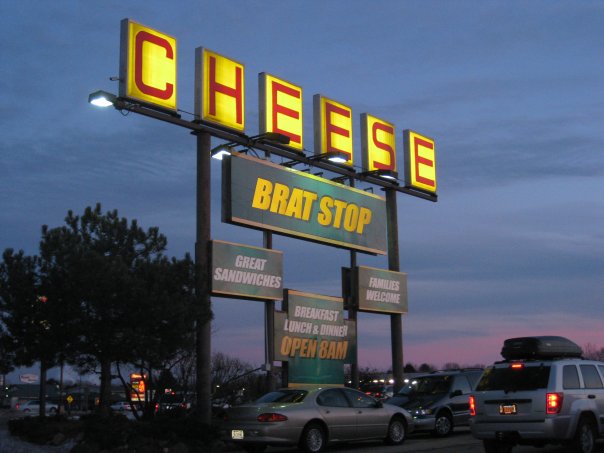
Just down the road from Rasmussen’s was Dick’s bar. Dick Dibble, an old Kenosha tavern owner, ran the small establishment just off the frontage road, about a mile south of highway 50. Dick’s was known as a “collegiate” hang out, quieter and more subdued than most of the other teen bars. (Which rarely saw subdued in their descriptions) Dick’s Bar is long gone.
About two miles south of Dick’s, also on the frontage road, was The Chaparral. “The Chap” had a Country & Western flavor and was probably number two or three on the “rowdy” list. They occasionally featured live music, again, usually C & W or rockabilly. The Chaparral closed down long ago.
Now closer to town, just off of Highway 50 and Highway C, sat Earl’s Club. Earls transitioned into a “regular” bar and was still around up until about twenty years ago. Earl’s was another bar where you could get into a “dust-up” pretty easily. My friend Carl’s uncle, Earl O’Hare, was the proprietor, so we always got good service there. Being the closest to town, it was the most convenient and probably had the fewest pile ups by alcohol fueled teenagers trying to find their way home.
Rasmussen’s, Dick’s, The Chaparral and Earls were probably the most popular of the eighteen-year-old beer joints. Another teen bar I remember was called The Pit and was further out in the county. Further out in the county meant more gas money and more chances of a pile up coming and going, so it wasn’t on our weekly hit list. What I remember most about The Pit, it always seemed to be wall to wall dancing. (Nice chick hangout) The Klondike was another bar out in the county, where our group had a few adventures, and misadventures as well.
Now there’s a few other bars that I remember, but don’t recall if they were teen bars or not. Shakey’s Pizza on highway 31, where Baker’s Street now sits, served eighteen–year–olds beer, I believe. Another bar, ill-fated though it was, was called The Thirsty Eye and was right next to Mars Cheese Castle on I-94. The Thirsty Eye was a pretty rough joint, and a frequent target of our local law enforcement agencies, who had to visit it on a nightly basis to quell problems. As fate would have it, one day during a storm, strong winds blew the huge Mars Cheese Castle sign down, and it landed right on top of The Thirsty Eye. No one was in it at the time, fortunately, as it was totally flattened. The local authorities took it as a good omen and never allowed The Thirsty Eye to be rebuilt.
We had a pretty good time at those teen bars, back in the day. I don’t know how we survived all those crazy rides home, but most of us are still around to talk about it.
Learn and see more about Joe Campolo Jr. at his website Click Here
(this article first appeared in the 3/11/21 issue of the Smart Reader)
_________________________
The Stump Gang
In 1971, after two and a half years of military service, including one year in Vietnam, I landed a pretty cushy gig at March Air Force Base in Riverside, California. There, I would finish the remainder of my four-year Air Force commitment.
Now a Staff Sergeant, I was given a desk job in an air-conditioned office..filled with women no less! And as an E-5, I would soon be paid to live off base in the quarters of my choosing. (Within the compensated budget)
Southern California was great duty, with access to the mountains, the desert, the Pacific Ocean, Las Vegas and Mexico. There was never any shortage of nifty places to visit.
Before I moved off base, I lived in the barracks for several months, with all of the highlights (and lowlights) that barracks life entails. Inspections, loud neighbors, boisterous parties, and the occasional brawl.
Our barracks was conveniently located right across the street from the NCO (Non-commissioned Officer) club and pool. That worked out great for those of us who liked to take a swim and have a refreshment or two after our daily duties were complete.
However, things were not as smooth as they could have been. During the late sixties and early seventies, the U.S. military was reeling from the double-edged sword of the Vietnam War and the Civil Rights Movement. Both of those entities challenged the military as it never had been before. And it would take years to recover, but it eventually did.
Back at March Air Force Base, the civil rights movement was playing out in full, as black power flew in the face of the “old guard”. There were problems aplenty and the upper brass wanted solutions. I was one of about two dozen members of our squadron placed on a race relations board. Meeting once or twice a week, we were supposed to be working on a long-range plan to establish procedures on handling racially sensitive issues. In reality we spent most of our time settling petty squabbles between two hostile groups. It was frustrating and soon became tedious.
Outside one end of our barracks there were a bunch of tree stumps that hadn’t been ground down or removed. The stumps actually provided a set of natural outdoor furniture, so black members of our barracks adopted this area as their hangout. They would be out there every day, late afternoon and into the night, partying, playing dice, playing chess, executing the “dap” and of course doing “the dozens”. The dap was a movement ritual that blacks made when greeting each other. Sometimes these greetings would take several minutes to execute. The dozens were an insult routine, that blacks would do with each other, to pass time. Both of these activities often made white people uncomfortable.
Some of the white members of our race relations board were invited to the Stump Gang festivities. I was one of those invited, and visited the Stump Gang more than a few times, before I moved off base in the summer of 1971. And I thoroughly enjoyed my time with the Stumpers, there was always plenty to drink, great music, stimulating discussion and some damn fine barbecue.
I didn’t always agree with the opinions of the more radicalized members of the group, especially the ones who advocated violence, but I empathized with many of their issues. The radical members were kept somewhat in check by the “leaders” of the Stump Gang, who earned their positions through experience, achievement and personality.
Three or four seasoned NCO’s were those unofficial leaders of the Stump Gang, and of that group, Staff Sergeant H. Slaughter topped the list. A quiet, thoughtful individual, Slaughter also had charisma. He had done his time in Vietnam, and the other senior men in the gang looked up to him. Like me, Slaughter was just marking time until his discharge, and like me, the Air Force seemed to spend an inordinate amount of effort getting him to re-enlist. Apparently, they enjoyed the challenge. (They were unsuccessful in both cases)
One of the rituals performed by the Stump Gang landed them outside the good graces of the upper brass. Everyone who drove or walked by the barracks was greeted with an extended middle finger. Though intended to be a harmless, inane gesture, it did not sit well with much of the “establishment”. I was uncomfortable using it, and only participated in the ritual when I was absolutely sure no uppity ups were on the receiving end. (I antagonized the upper ranks enough without adding that to the pile)
But a funny thing happened during those afternoons and evenings at the stumps. As the dozen or so whites interacted with the blacks in the Stump Gang, the two groups came to have a better understanding of each other. And through that better understanding, word got around, and after a time, procedures based upon mutual respect and understanding were written by the race relations board. There, while off duty and at leisure, solutions to racial disharmony availed themself, and those solutions were passed along to the rest of the squadron, and to the base.
The most important thing about a problem is not it’s solution, but the strength we gain in finding the solution. ~Seneca
Learn and see more about Joe Campolo Jr. at his website Click Here
(this article first appeared in the 2/25/21 issue of the Smart Reader)
___________________________________________________________
SOUTHPORT BEACH
When it’s 90 below (or so) in Wisconsin, it’s always nice to remember the warmer times we’ve had. I like to think back to my youth and our many trips to Lake Michigan, fishing for perch, smelt or just swimming. (See my earlier blog articles on those topics)
Living on the south side of Kenosha, the kids in our neighborhood usually went to Southport beach for our lake outings. Living near the old Sunnyside (now Grewenow) school, the lake was less than two miles from our house. In the summer, after our morning paper routes were done, we’d often ride our bikes down there to fish for perch. Later in the day, we’d go back for a swim.
From where we lived, we’d ride down 79th street and carry our bikes over the Chicago Northwestern railroad tracks, right where the current Sheridan Lanes bowling alley is. From there, we’d go through the path that went right by the city dog pound, which was down in that area at the time. I always got a kick out of seeing all the dogs as we went by, and of course they’d bark and yap at us, coming and going.
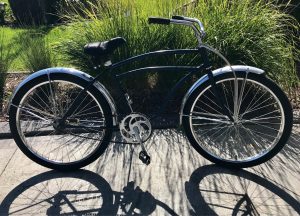 Once down by the lake, we’d lock our bikes up in the bike rack. (Because everyone in town wanted to steal our twenty-year old balloon tire bikes) Then, we’d get a basket from the attendant in the beach house, and change into our suits. There was a tall wall separating the boys and girl’s locker room, and there was always yelling and whistling going on back and forth. Every once in awhile a boy would scale the wall to get a peak, to the accompaniment of screams and shouts from the girls on the other side. If he got caught, he would be banished from using the locker room for the whole summer.
Once down by the lake, we’d lock our bikes up in the bike rack. (Because everyone in town wanted to steal our twenty-year old balloon tire bikes) Then, we’d get a basket from the attendant in the beach house, and change into our suits. There was a tall wall separating the boys and girl’s locker room, and there was always yelling and whistling going on back and forth. Every once in awhile a boy would scale the wall to get a peak, to the accompaniment of screams and shouts from the girls on the other side. If he got caught, he would be banished from using the locker room for the whole summer.
Once out by the water, we walked gingerly through the rocks into the frigid waters of Lake Michigan. It usually took about ten minutes to get “used to it”, so we’d slowly walk in deeper and deeper until we could stand it. From there, we’d usually find other friends in the water and swim over by them. We’d keep an eye out for “non-friends”, and we’d either avoid them or start a dust up to keep our feud healthy.
We’d often walk out onto the rock piers, jumping back into the water in the deeper spots. The little channel between the two rock sections let out to the big lake, and the older kids would usually be out there jumping in and out, swimming around, and showing off.
After a time, we’d leave the water and maybe sit around on our towels on the beach. If we had any money, we might get a soda, or ice cream bar from the vending area in the beach house. We didn’t like to stay out of the water too long, otherwise we’d have to spend another ten minutes getting “used to it” again.
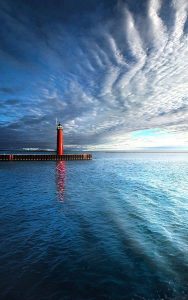 Usually, we’d spend two hours or so down by Southport. Once in a while, from Southport, we’d swim all the way to the North Pier in Kenosha. If we did, it would take most of the day, swimming there and back. We’d leave the water for a rest now and then, each way.
Usually, we’d spend two hours or so down by Southport. Once in a while, from Southport, we’d swim all the way to the North Pier in Kenosha. If we did, it would take most of the day, swimming there and back. We’d leave the water for a rest now and then, each way.
Back at Southport, we wouldn’t leave until everyone in our bunch agreed to go. When we did leave, we’d head back the same way, again being greeted at the dog pound by the yapping mutts. Sometimes coming and going, we’d have to wait for a train to go by before crossing the tracks. If we managed it in time, we’d lay a penny on the tracks for the train to flatten out. (This was considered a high technology sport) We couldn’t always find the penny after, but we took the financial risk anyway.
Once back home, we’d head in for a snack, then back out to shake all of the sand out of our shoes after Mom yelled. Before she could load us up with too many chores, we took off for another adventure.
NOTE: in order to maintain my PG rating, no information on the sand dunes was included in this article.
Learn and see more about Joe Campolo Jr. at his website Click Here
(this article first appeared in the 2/11/21 issue of the Smart Reader)
————————————-
THE AGE OF AQUARIUS
I served in the United States Air Force from 1968 to 1972. I served in Vietnam from January 1970 to January 1971. I entered Vietnam as an Airman First Class (E-3) and left as a Staff Sergeant (E-5). I was stationed at Phu Cat Airbase in Binh Dinh Province in the Central Highlands of Vietnam, in what was designated as the 2 Corps military region. I was assigned to supply; my duties included warehouse work, running materials to and from other military facilities in the area, and for a little over one month flying as a crew member on C-130, C-119 or C-47 aircraft, humping cargo.
The village of Phu Cat sat on the southern end of the air base, the rest of the base being surrounded by dense field or vegetation. The volatile province of Binh Dinh, Vietnam was never pacified and accounted for the fifth highest casualty rate for U.S. troops during the war, with upwards of seventy percent of the population estimated to be Viet Cong or Viet Cong sympathizers. The hootches we were quartered in consisted of half screen and half one inch plank structures. Each hootch at Phu Cat was surrounded by a 4 foot high, three foot thick sand bunker offering a degree of protection from shrapnel, incoming mortars, rockets and small arms fire.
Our perimeter at Phu Cat; clean as a whistle thanks to agent orange. After the sun went down all hell broke loose.
At night our perimeter would come alive with small arms fire, mortar detonations and air to ground fire raging from sundown till sunup. Our hootch was very close to the perimeter and as a result we were in close proximity to much of the night time action. When not on duty, one of our favorite activities was to sit on the sand bunkers, drinking, smoking and watching the evening fireworks. We would rate the action by intensity and shout and cheer at particularly heavy action. Occasionally when the fighting was too intense or got too close we would be forced to retreat behind the bunkers.
On one particular evening the fighting was as crazy as we ever saw it. A firefight raged up and down the perimeter like a snake, and lasted for hours. Spooky and Puff gunships joined in, raining fire down from the sky as the battle intensified.
One crazy guy who hung with us, a zany character from New England named McCormick often joined us during these shows. “Mac” was a tall, lanky good natured dude. He was always joking around, had a keen wit and a great fondness for Gin and tonics. In Vietnam, we would often get shipments of alcohol of one kind or another by lot. For about four months while I was there, we got mostly gin, so naturally that’s what we drank. We made our own tonic using quinine from the dispensary and white soda which we traded for. Mac was by far the leading consumer of our gin and tonics, notable for having drank thirty two on one particular evening alone.
On this particular night, Mac sat with us, drinking our gin and tonics, and watching the fighting rage on. Finally, the battle became too intense, forcing us to retreat behind the bunkers into the hootch. Undaunted by the intensity of the violence, Mac dragged out a speaker from a stereo in the hootch. He placed the speaker on top of the sand bunker, put a tape on the reel to reel inside the hootch, and turned the volume up full. Soon, amidst the explosions, shooting and screaming “The Age of Aquarius” by The 5thDimension blasted from the lone speaker sitting on the bunker.
It was a wild, surreal scene. We laughed, yelled and sang along with the peace anthem favorite, as the violence raged on.
And although I was to witness many unfortunate events in Vietnam, that event, though not tragic, remains one of the most memorable for me. To this day, I can still see Mac, hunkered down behind the bunker, gin and tonic in hand, flashing his patented evil grin.
Learn and see more about Joe Campolo Jr. At his website Click Here
This article also appears in the 1/28/21 issue of the Smart Reader
___________________
The Paper Route
Growing up in Kenosha back in the fifties and sixties, many of us boys (and a few girls) had a paper route by the time we were twelve years old. Our allowances pretty much expired by that age, and our fathers let us know it was time to start earning our own spending money. (And they weren’t too subtle about it either)
The premier paper route job in Kenosha was that of a Kenosha News carrier. The Kenosha News routes were thought to be gravy jobs, because most of the people in Kenosha got that paper and as a result, the route sizes were small, but concentrated. You could walk those routes easily in an hour or so. If you had a Kenosha News route, you were high on the pecking order as a kid.
The other type of paper route to be had in Kenosha was a Henoch News agency route. These routes delivered the Chicago Tribune, Chicago Sun Times, Chicago American, Milwaukee Journal and Milwaukee Sentinel. Customers for those papers were much fewer and farther between, so the routes were large and spread out. Each of these papers was larger than the Kenosha News and required folding the various sections together before delivery. Because of the large spread and size of the routes, it typically took at least two hours to complete the route, sometimes three. The highly valued Kenosha News routes were handed down from family member to family member, so we ended up with a Henoch route.
My brother John and I started out with a Sunday route, and kept that going for a couple of years. Later, we got a daily route which paid more. When we first started out, we had to collect the money from the customers, and that would take another two to three hours each week. Henoch News eventually came up with a collection system that eliminated the need for the carrier to collect from the customer. That saved time, but also cut us out on many of the weekly tips we may have gotten. (At Christmas time, using cheap calendars as bait, we lobbied for tips)
Spring, summer and fall weren’t too bad as far as delivering papers in Kenosha. But winter…winter added a whole new set of problems to the task. My brother and I both had bicycles with side baskets which would hold many papers. Two or three trips to refill and we’d be done. In the winter, when the weather was bad, we had three choices; talk “Dad” into driving us, walk the route with newspaper bags, or use the sled with a special box for carrying loads. You can guess how much luck we had convincing Dad to take us. Walking our routes with the bag or the sled added at least two hours to our delivery time, but you do what you have to do. In the spring, summer and fall, rainy days presented problems as well. The newspapers were dropped off in bulk in front of our house in the early morning. If it was raining, we’d end up with a bundle of soggy newspapers.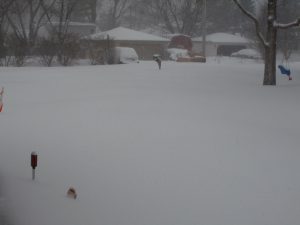
Bad weather wasn’t the only problem we encountered during our paper route days. In the days when we still had to collect from the customers, there were always customers who we had to call on several times before we could collect the money owed. Occasionally the news agency would tire of their stalling and cancel their subscription.
Newspaper carriers and mail carriers both had to deal with a common enemy on occasion…dogs. Loose dogs would sometimes threaten us and even chase us off our routes. We got pretty adept at whacking them with a rolled-up newspaper while pedaling away as fast as we could.
One dog of note, harassed me on my route for a couple of months one year. I complained to the owners and the news agency but nothing helped. My mother didn’t like dogs, so we never had one. But now and then I’d bring home a stray and she’d let me keep it for a short while.
One of the strays I adopted solved the problem of the constant harassment I had been getting from the dog on my route. This particular stray was a large Boxer. I started taking it on my route, with the leash attached to the handle bars on my bicycle. Sure enough, one day the dog that had been harassing me came tearing out after us. I let the boxer off the leash and he taught that dog a well-deserved lesson. I had to give up the boxer after a couple of weeks, but was never harassed by the other dog again!
Despite a few inconveniences’ and problems on our various paper routes, I mostly enjoyed them and picked up enough money to carry me along for three or four years.
Learn and see more about Joe Campolo Jr. At his website Click Here
This article also appears in the 1/14/21 issue of the Smart Reader


